
This website supports three options for navigating through the comic: horizontal scrollbar, left and right keyboard arrows, and dragging the comic.
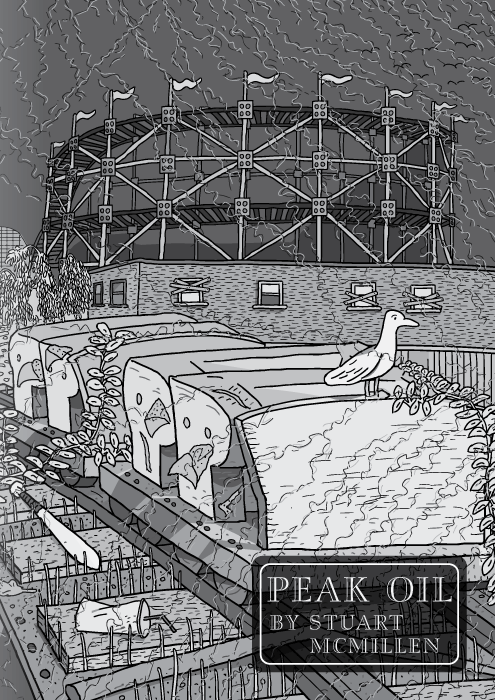
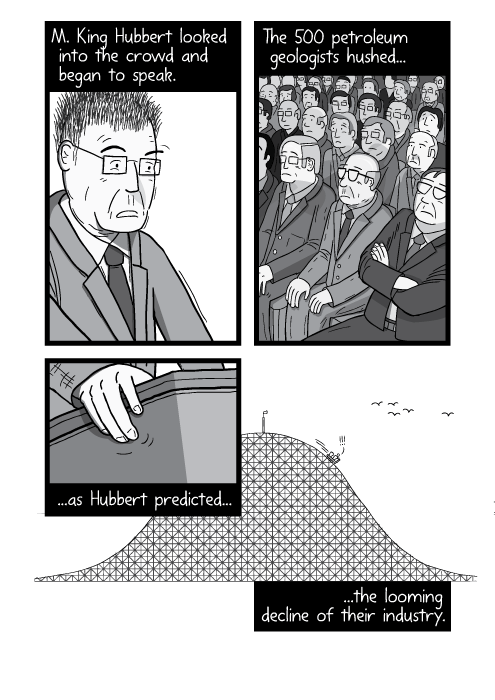
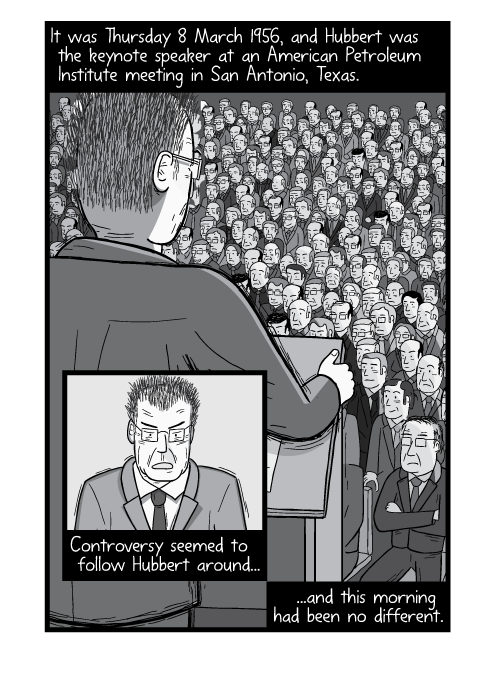
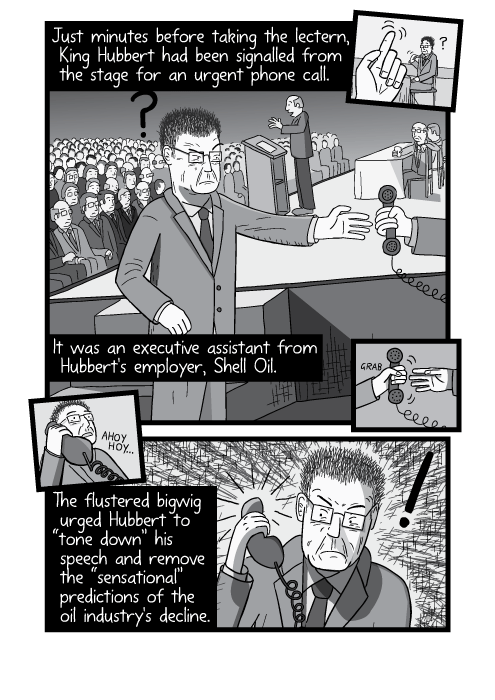
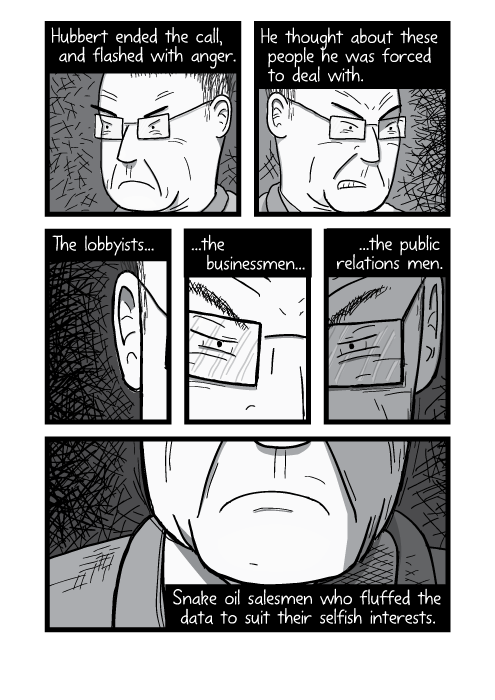
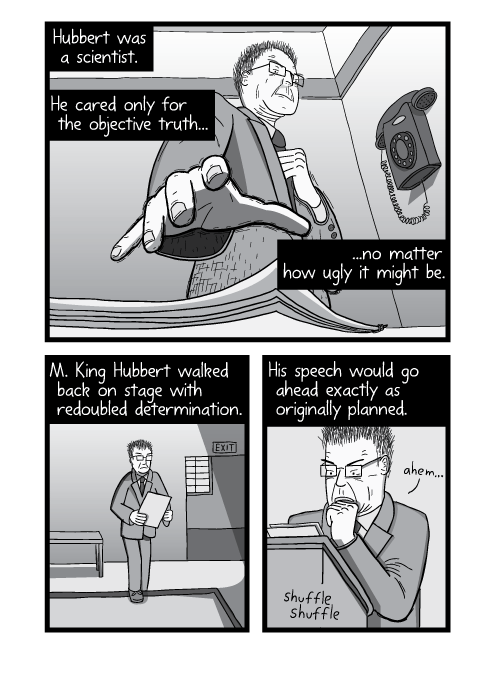
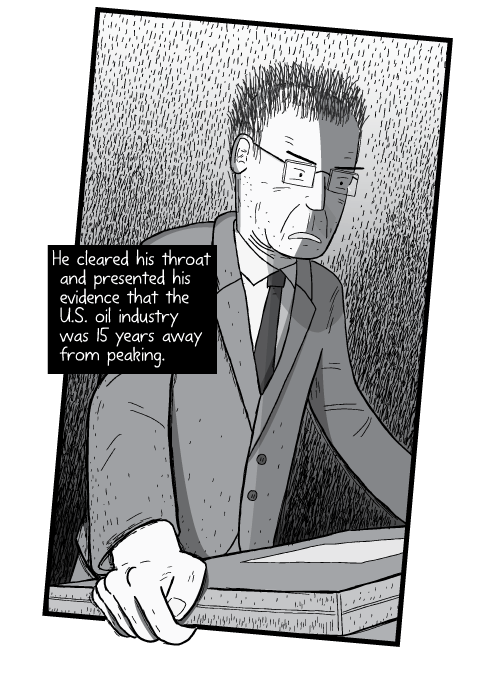
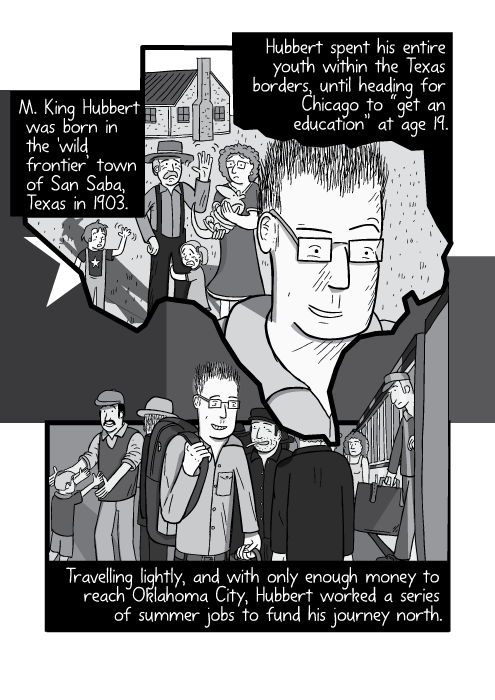
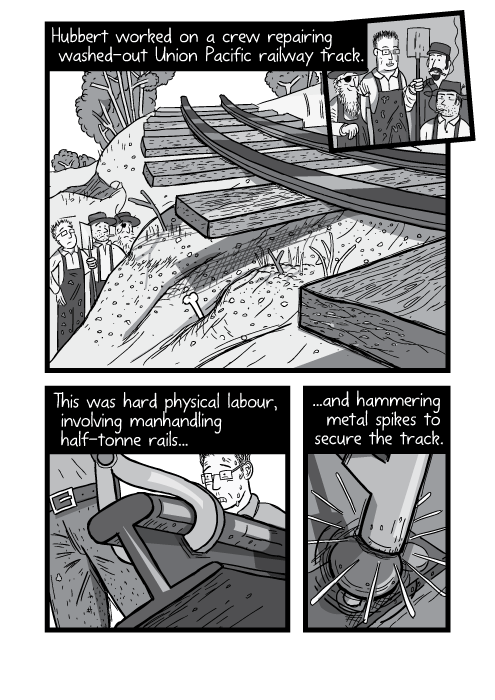
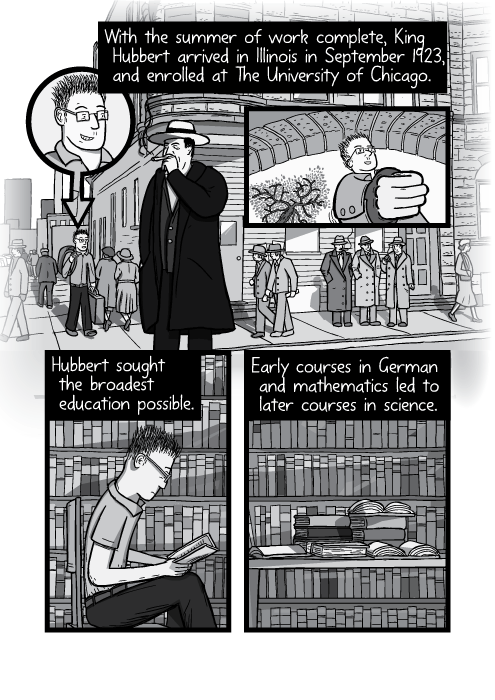
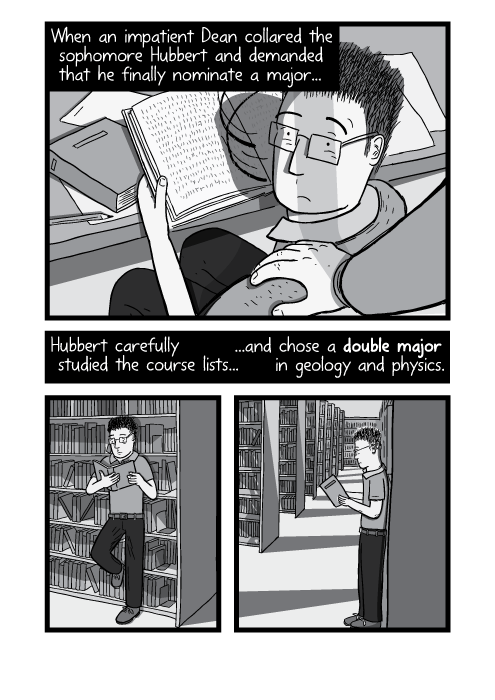
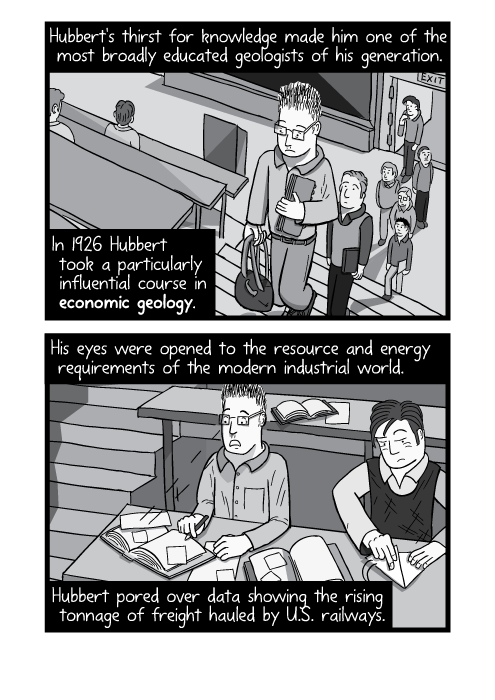
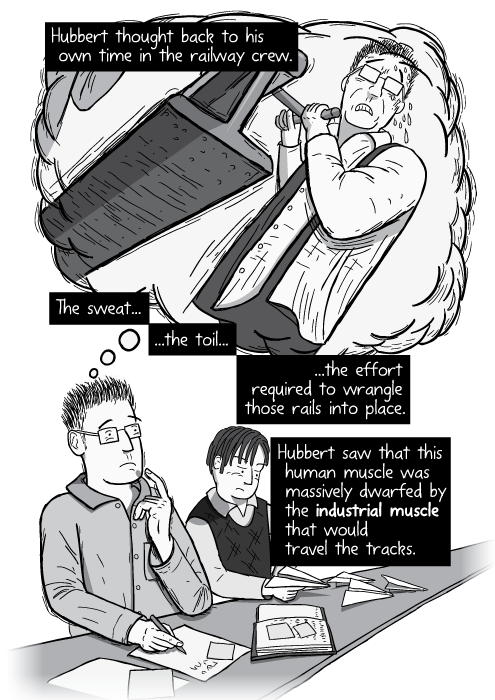
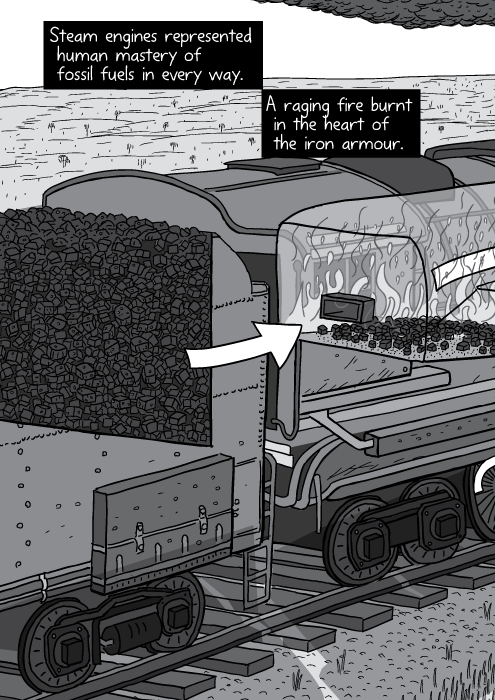
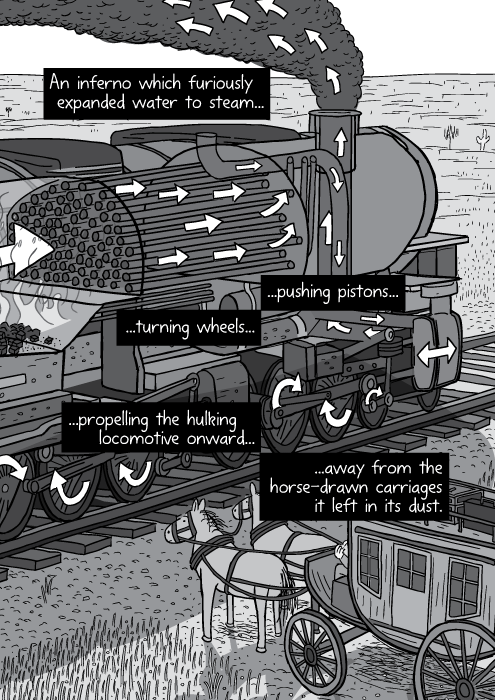
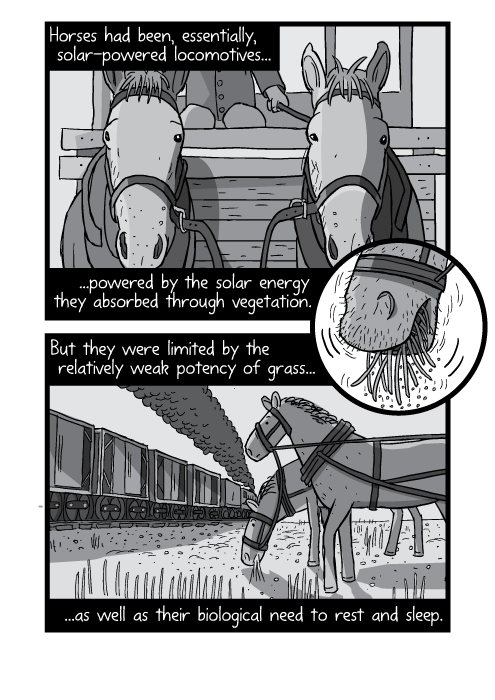
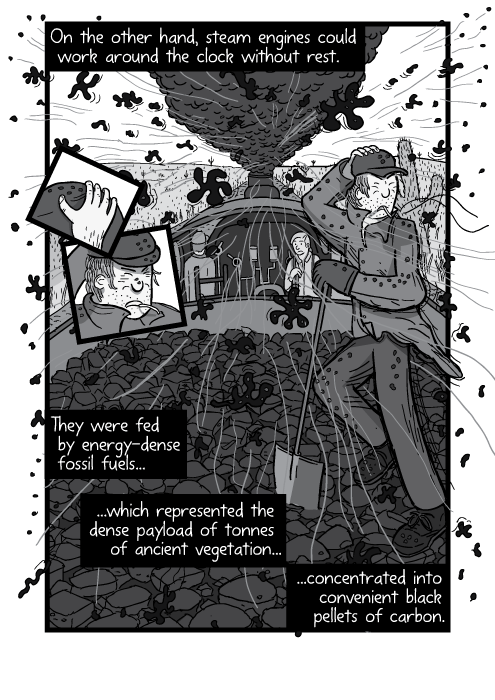
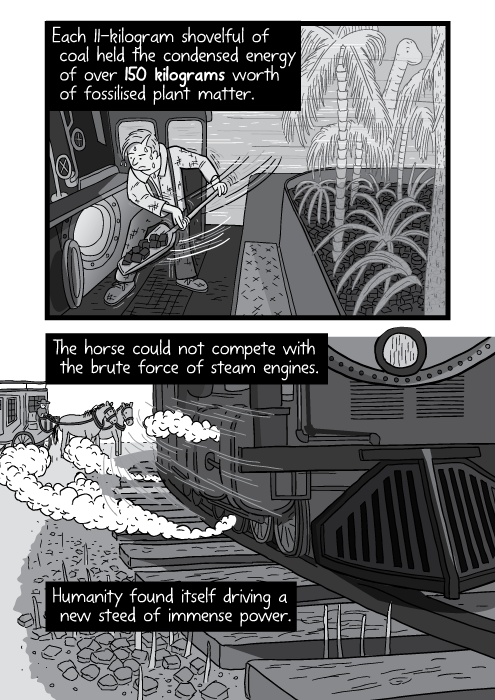
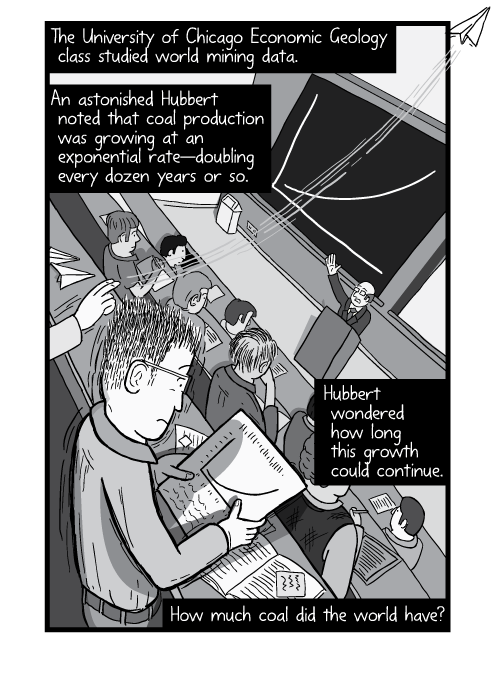
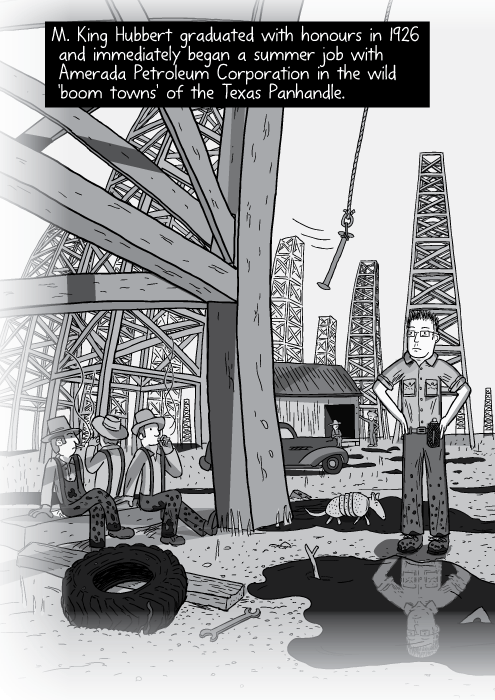
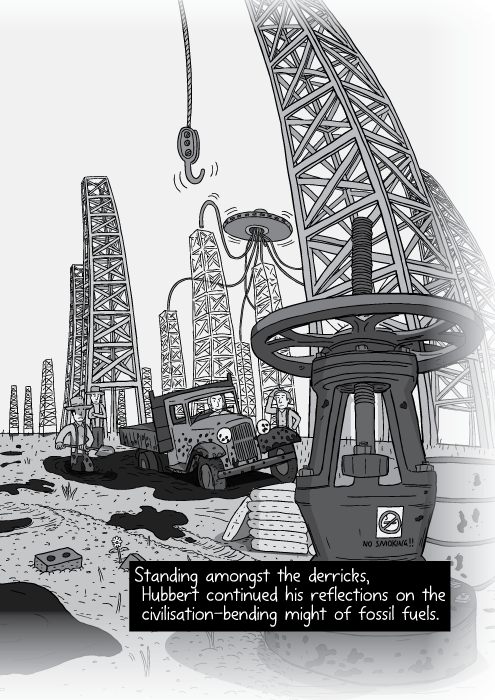
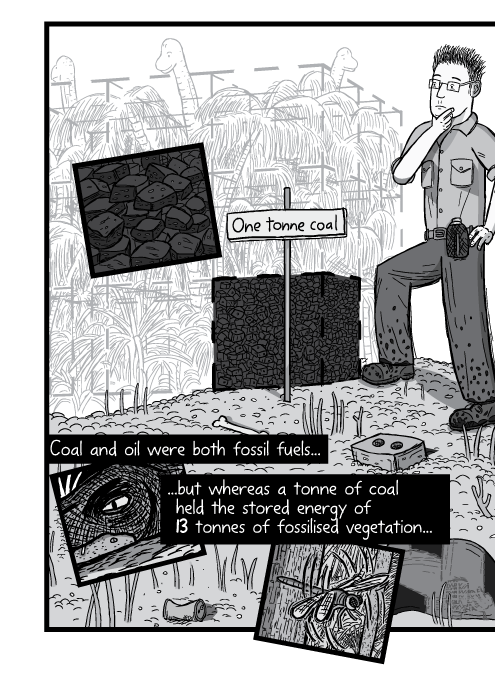
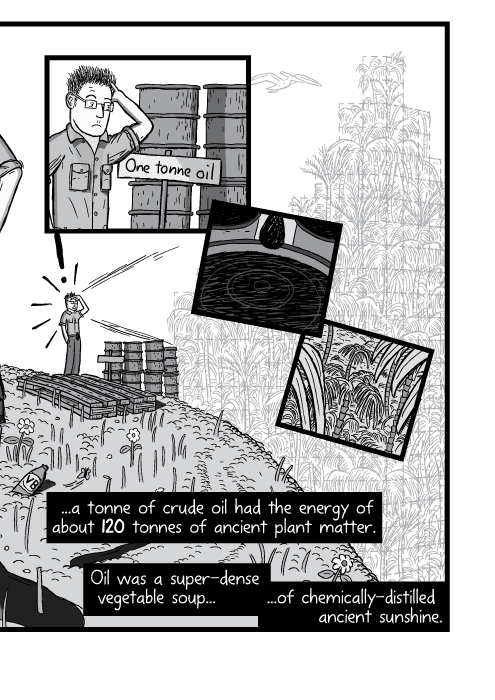
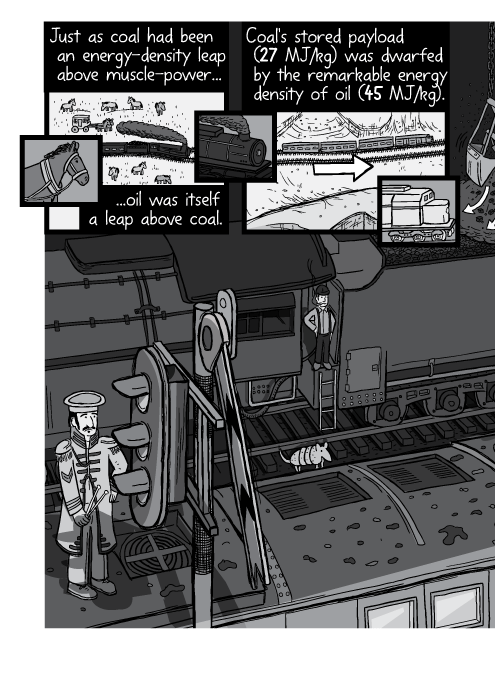
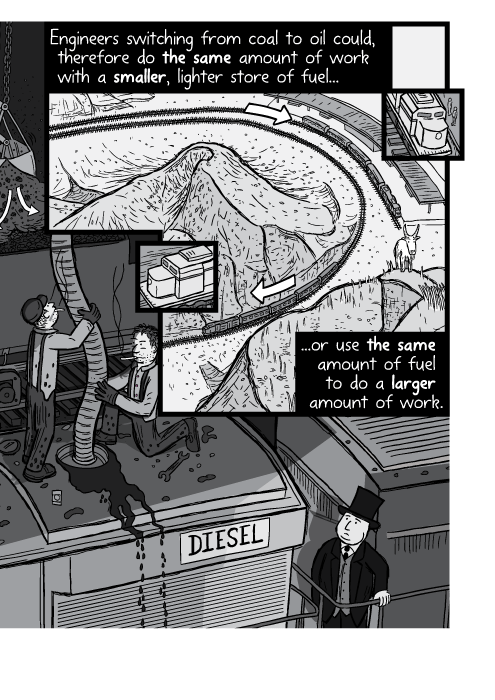
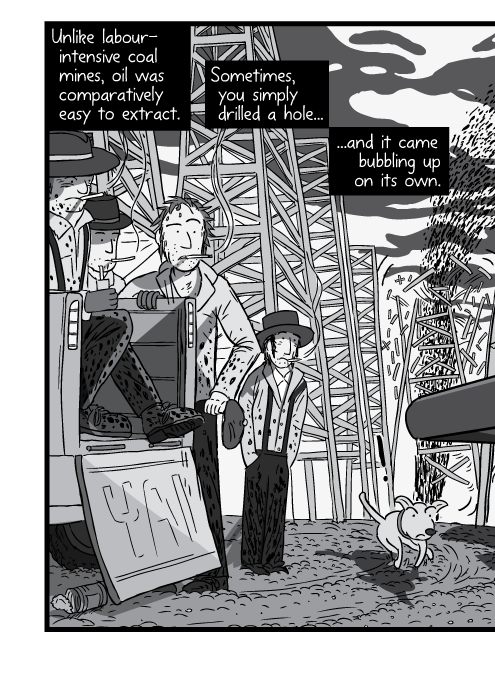
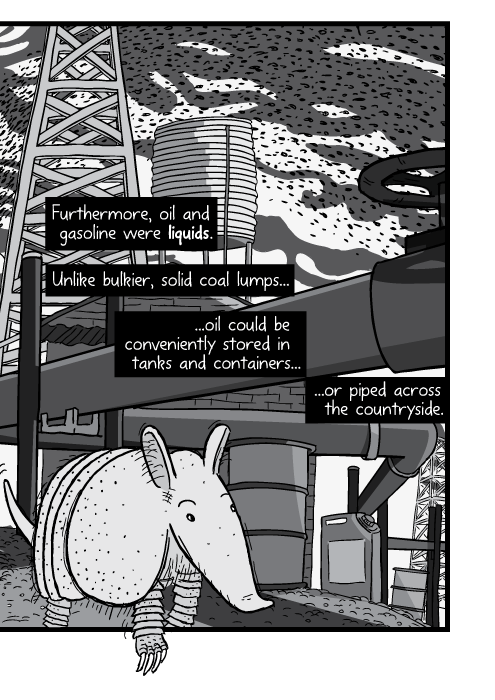
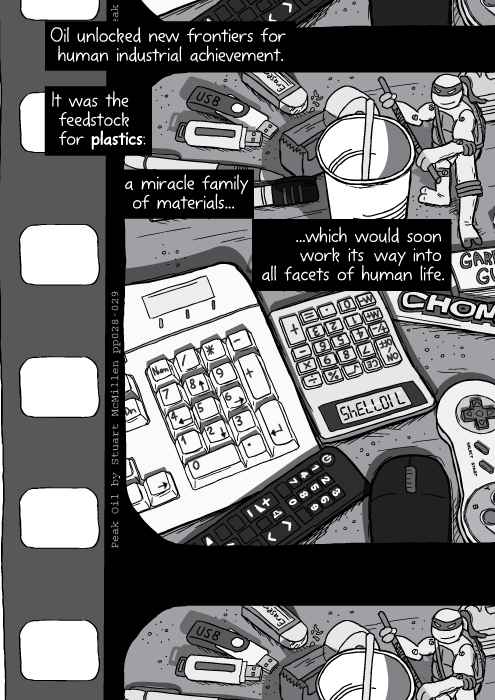
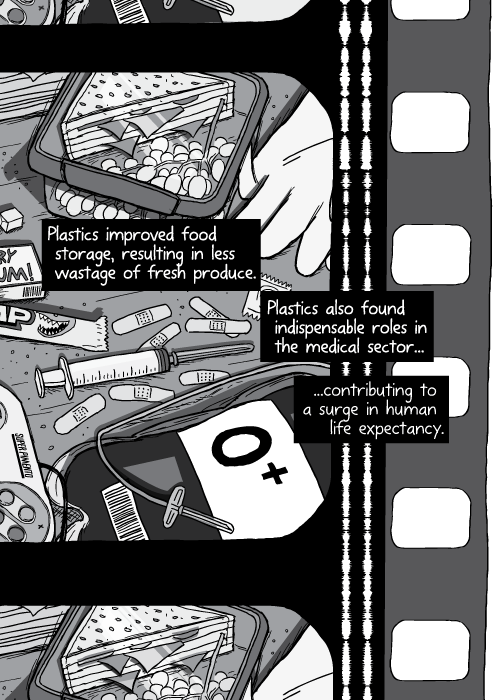
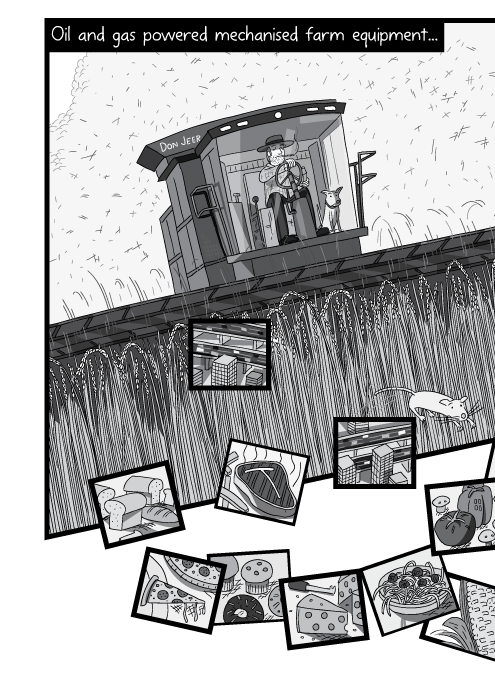
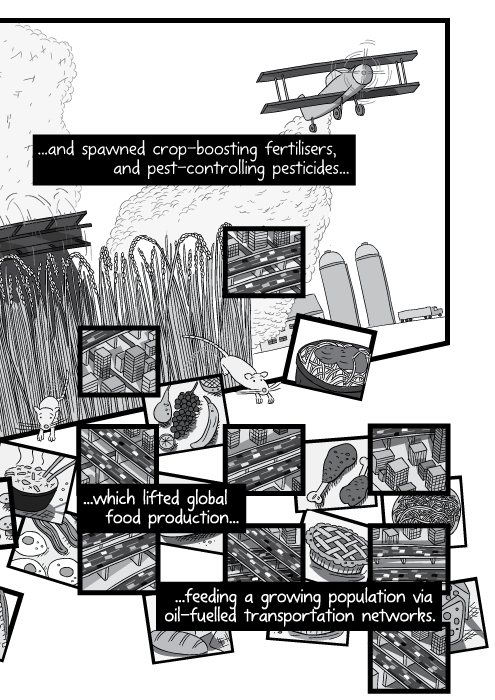
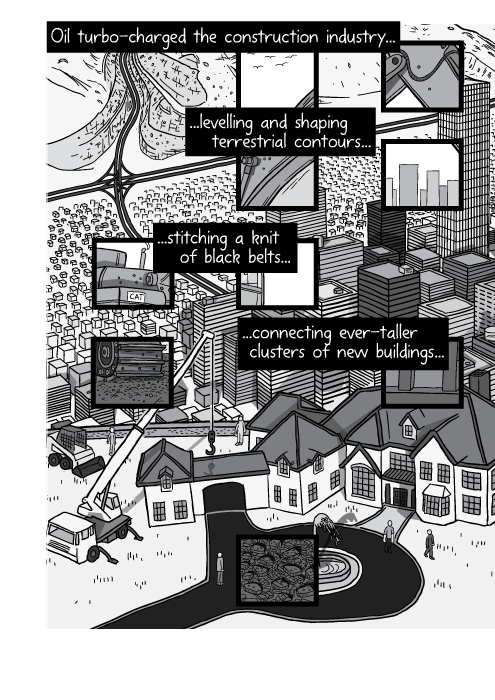
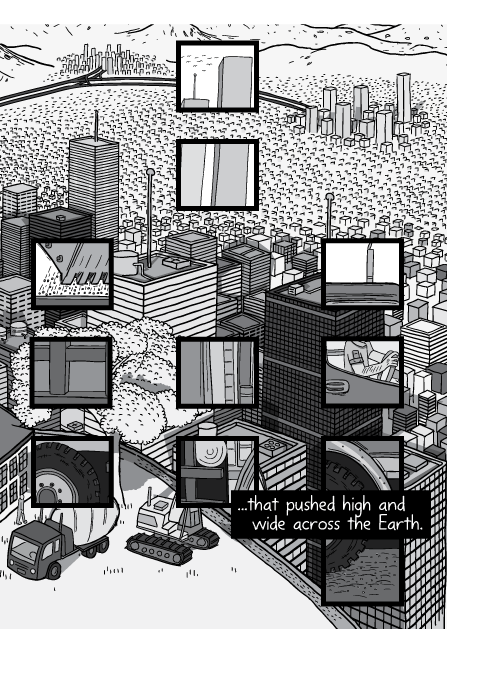
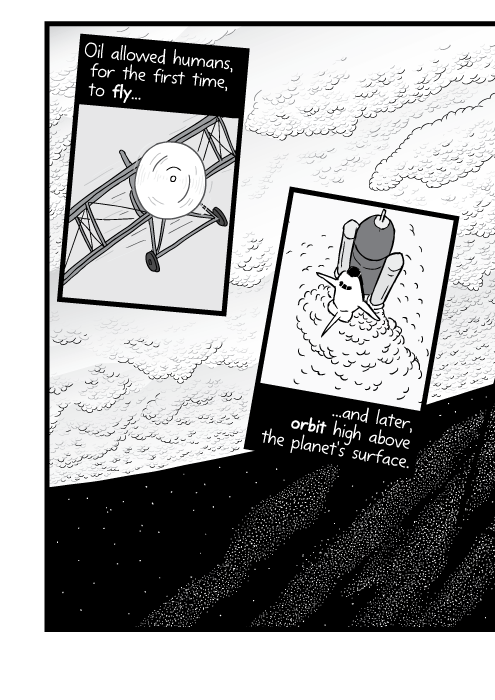
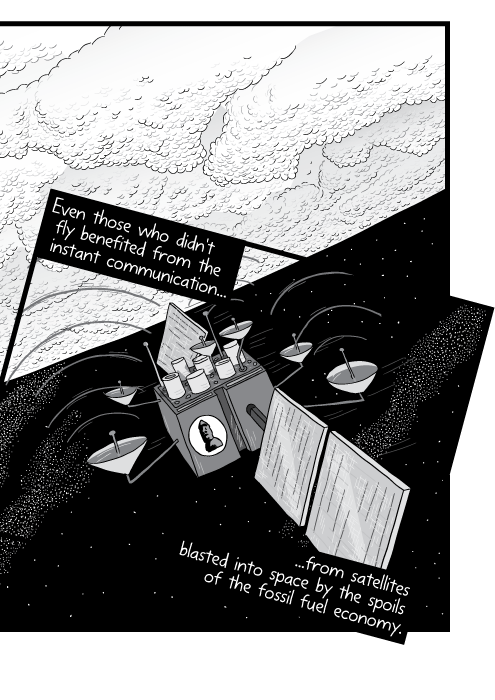
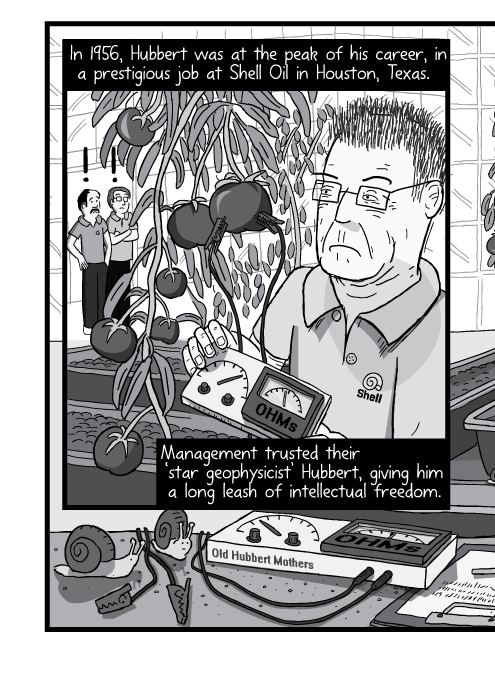
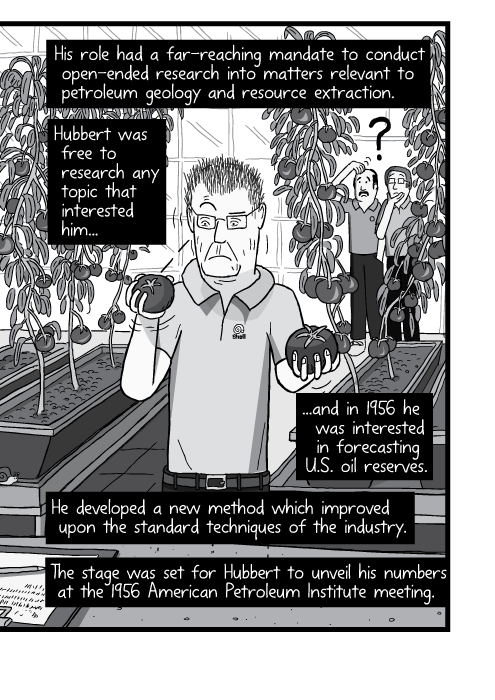
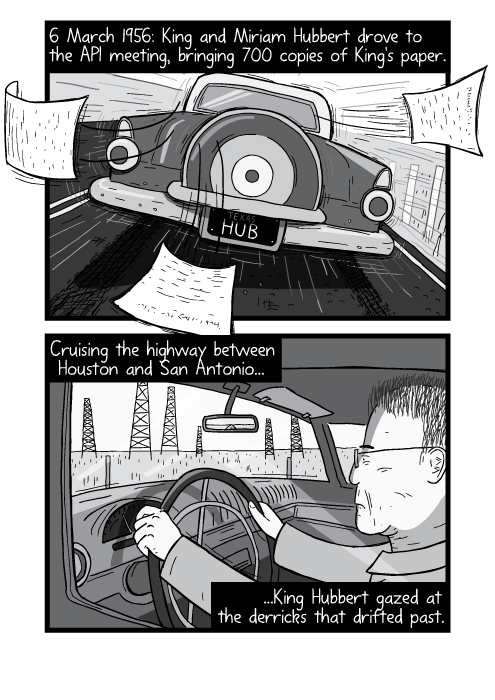
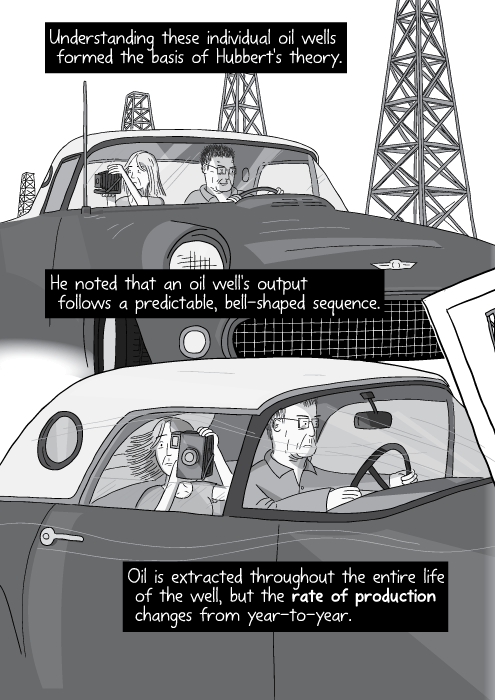
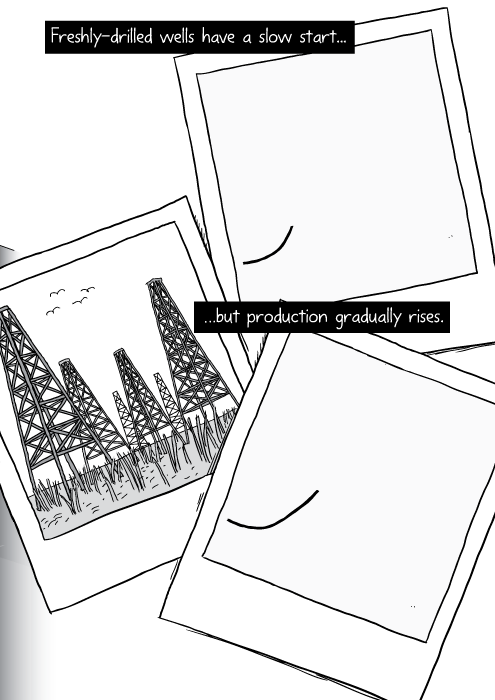
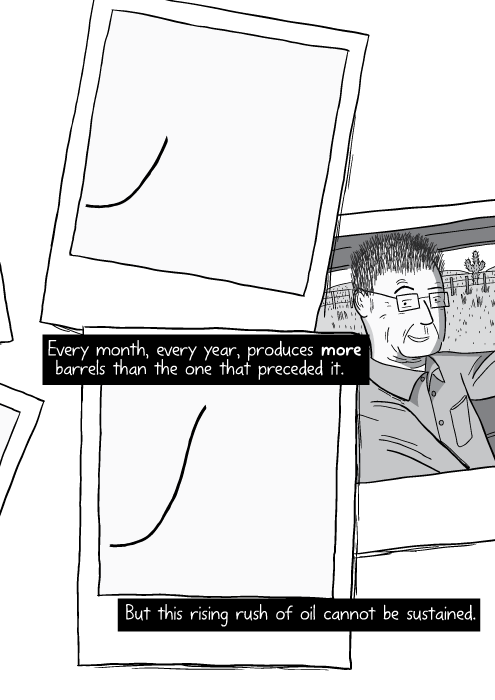
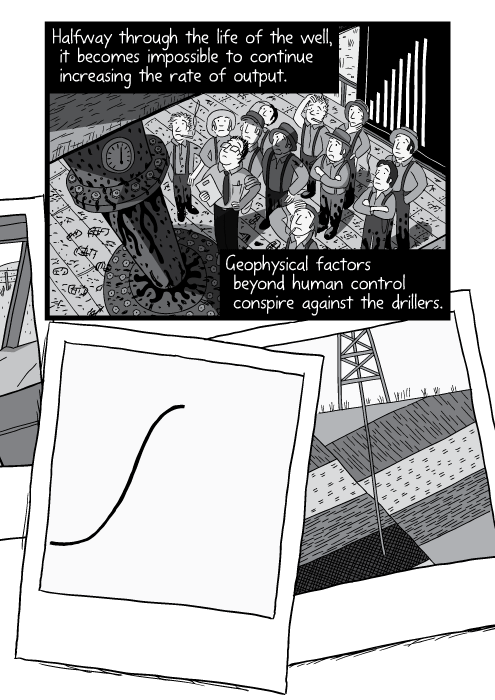
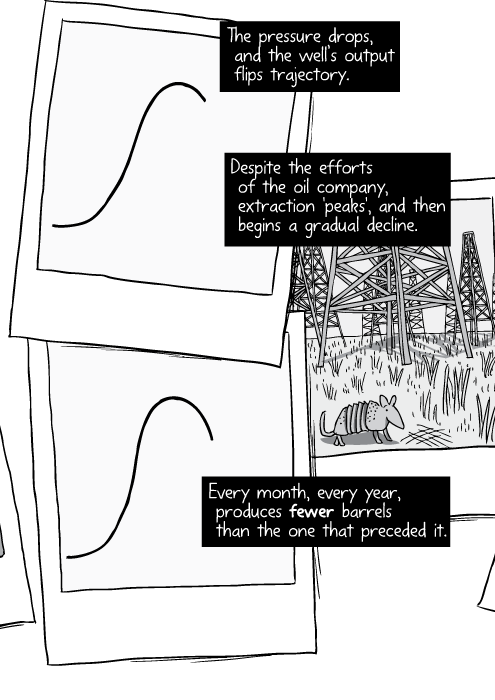
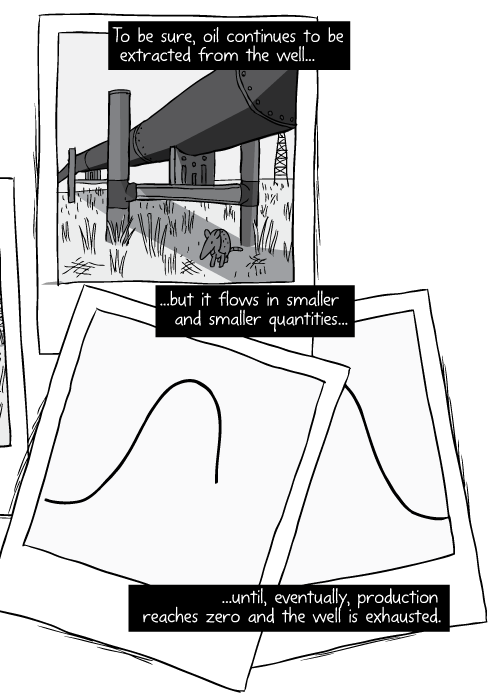
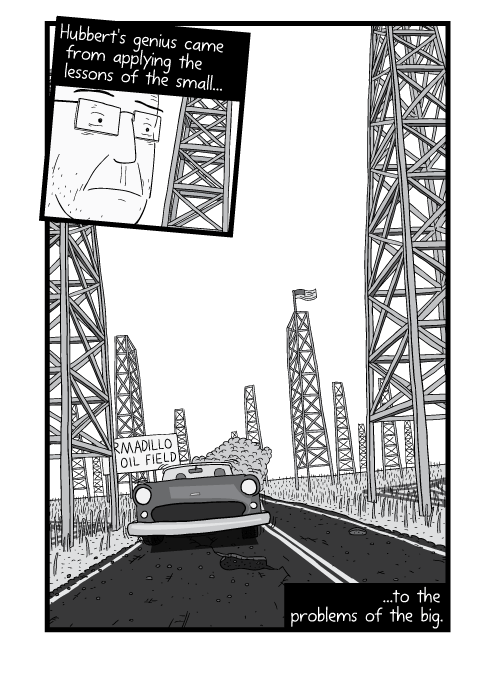
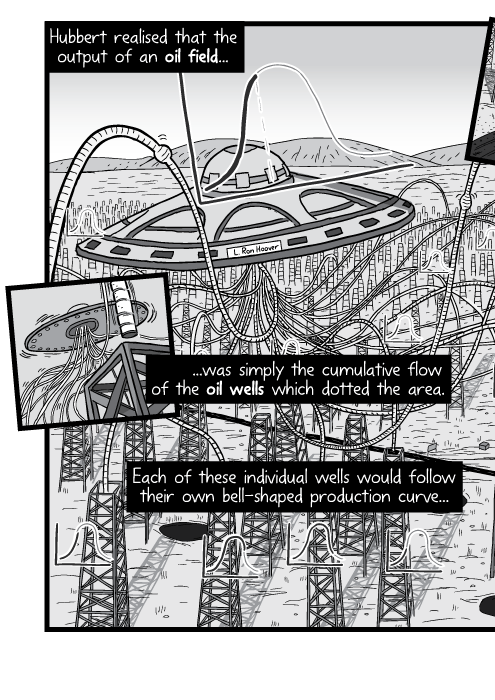
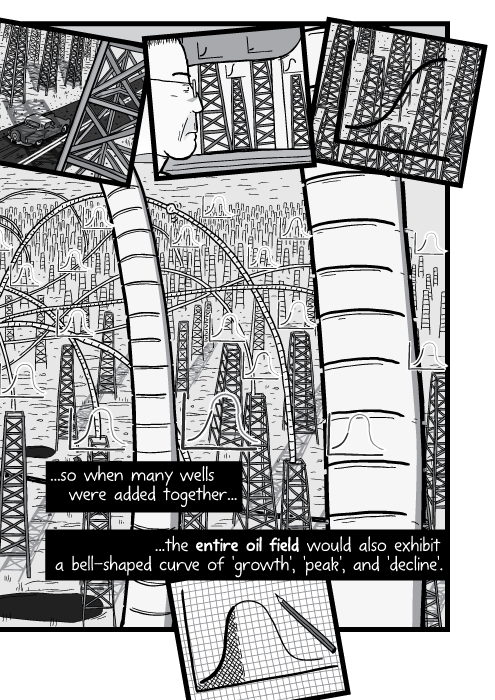
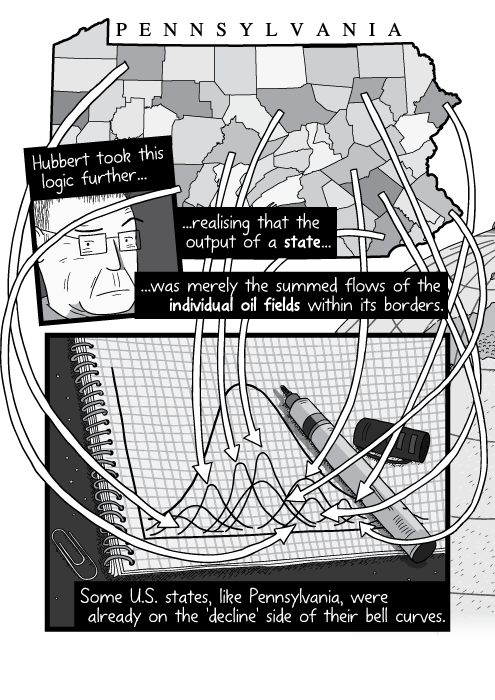
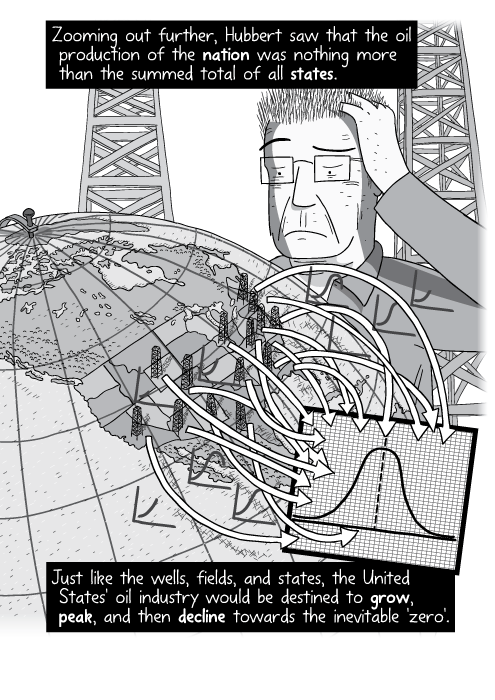
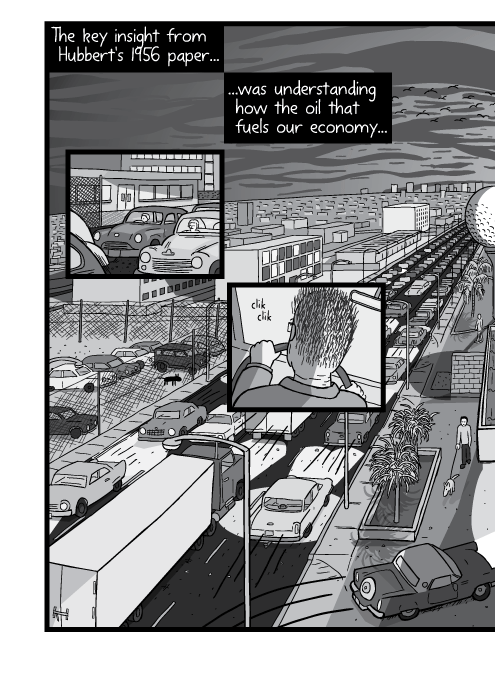
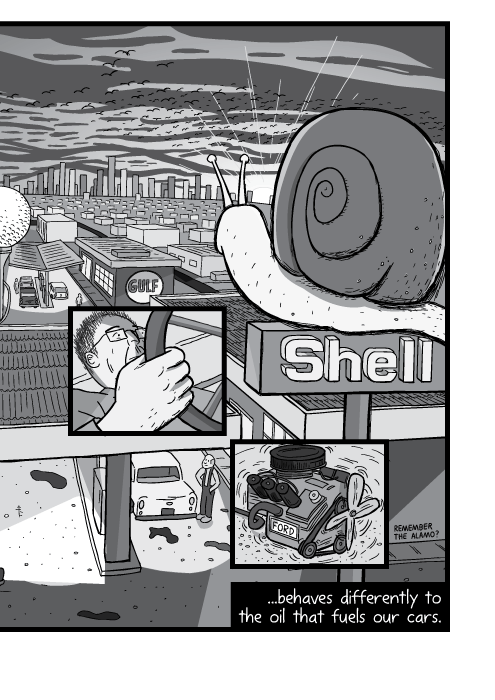
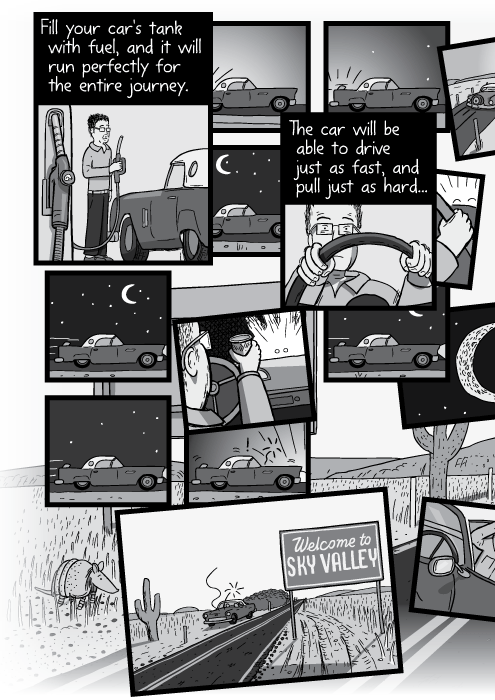
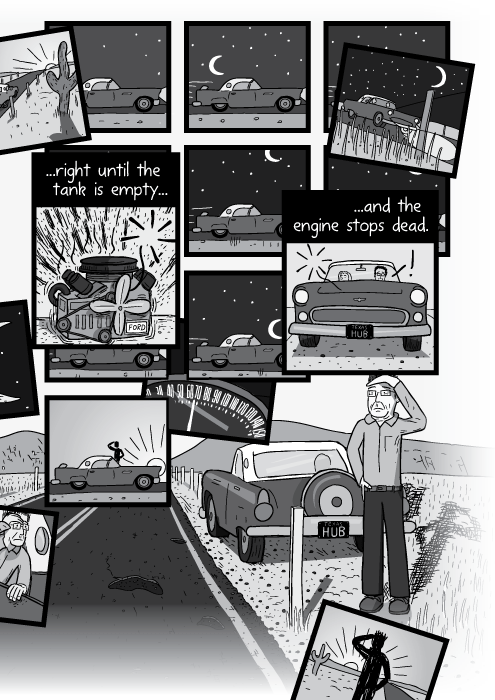
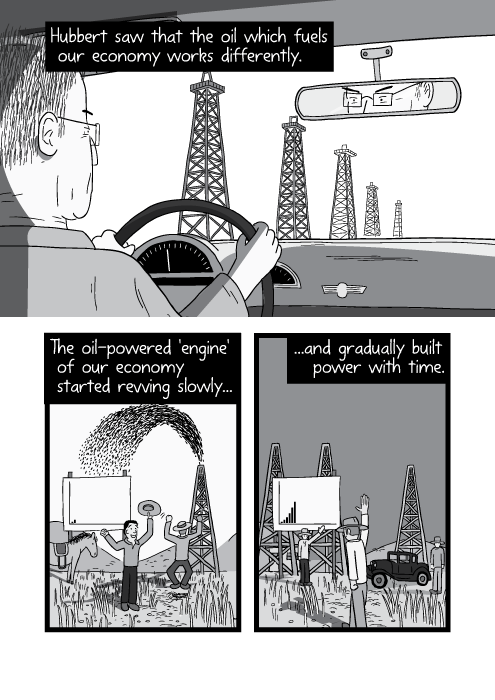
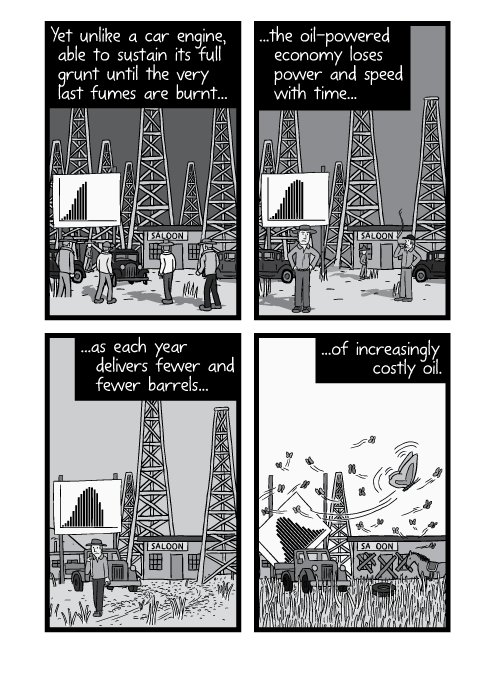
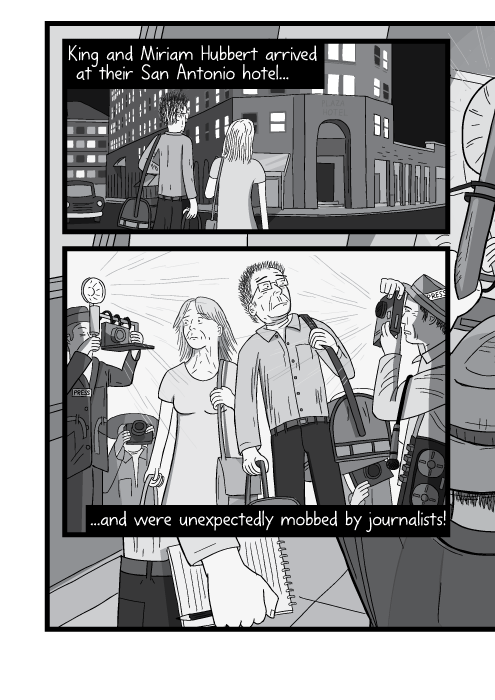
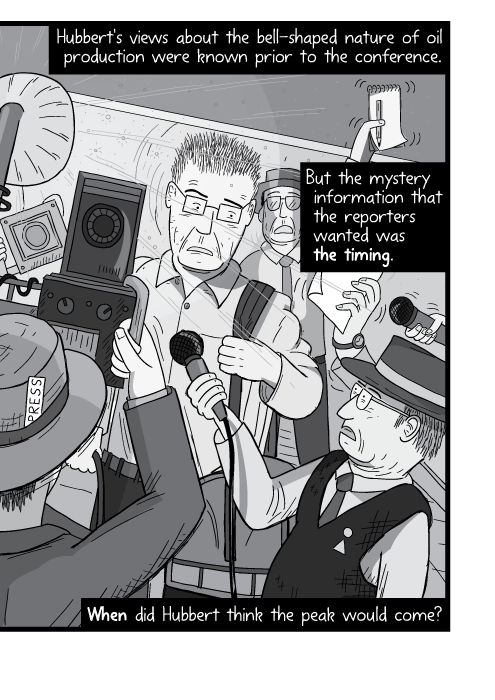
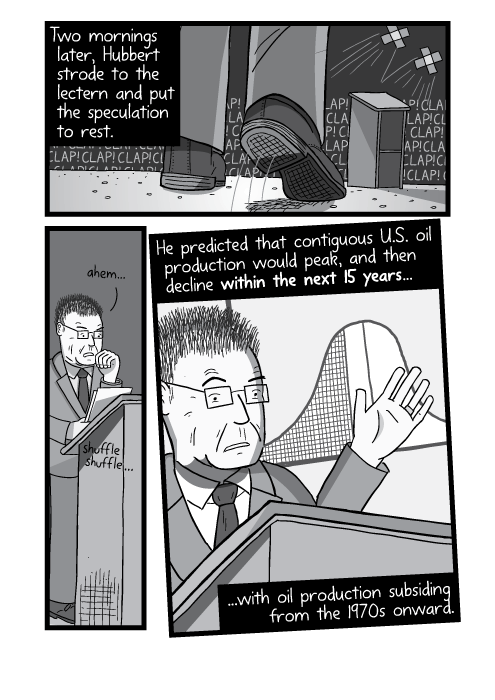
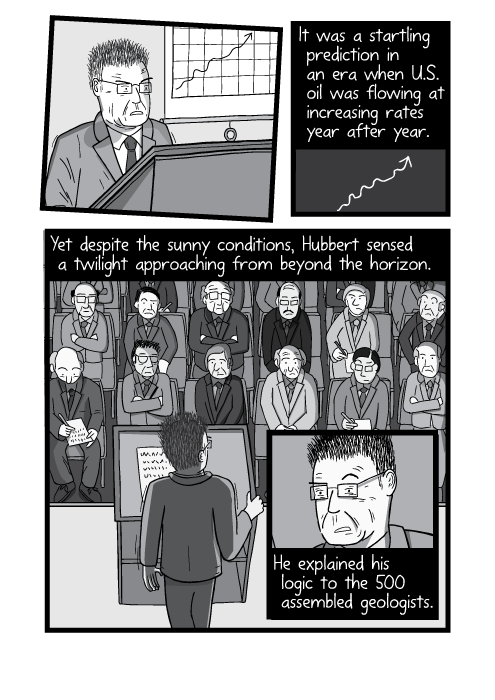
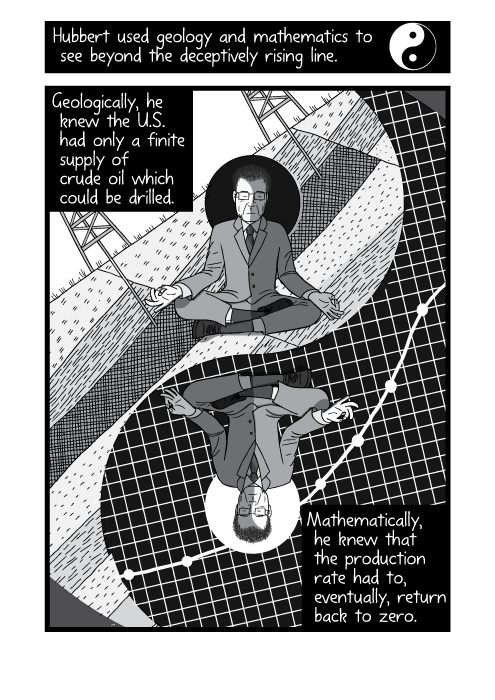
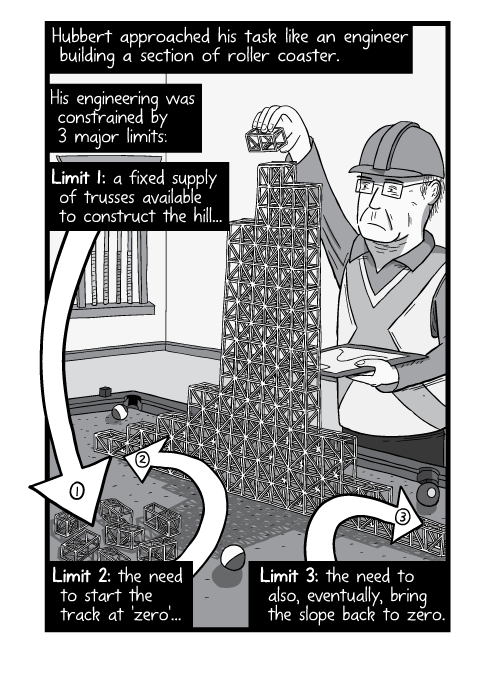
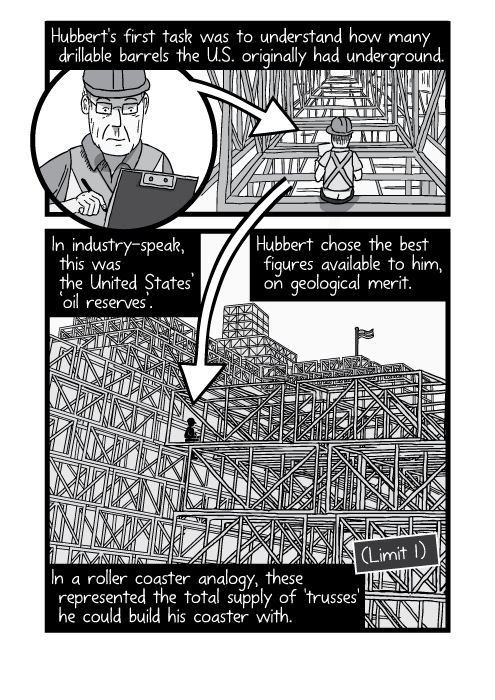
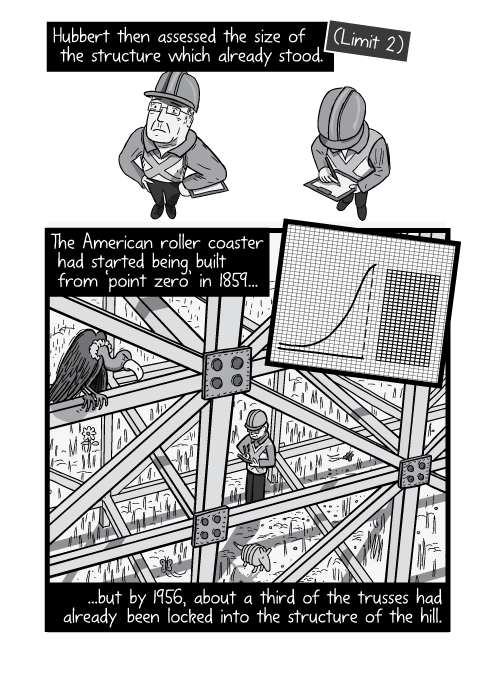
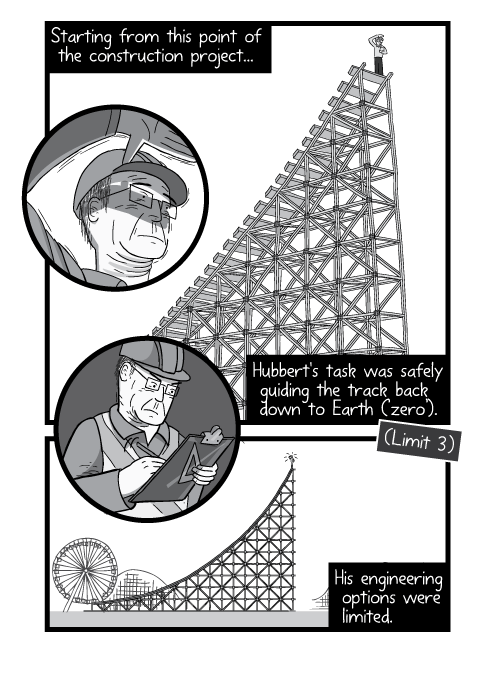
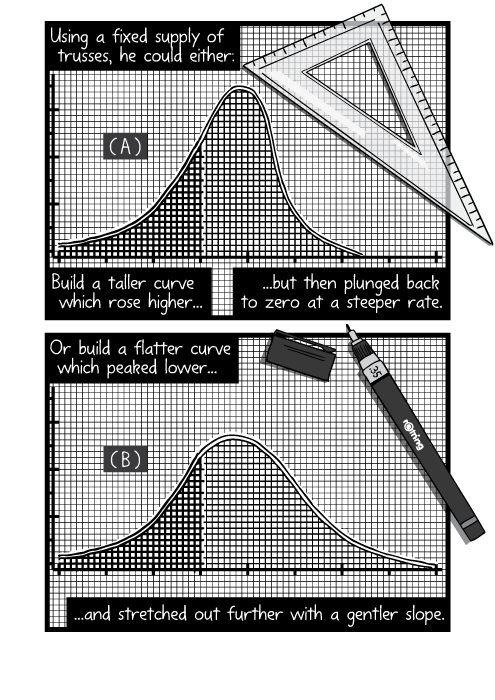
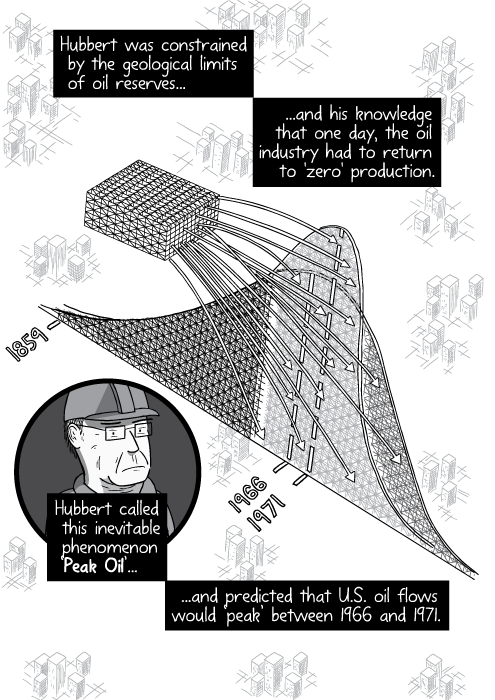
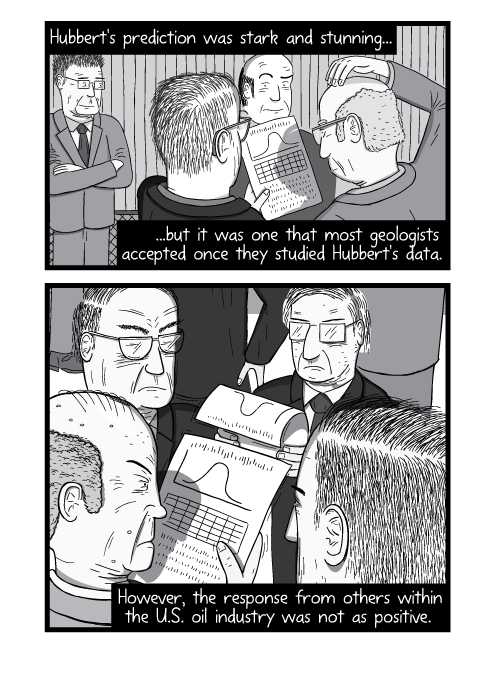
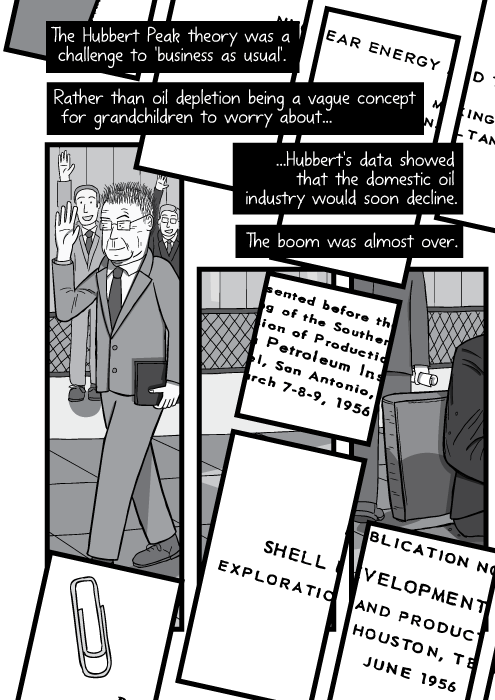
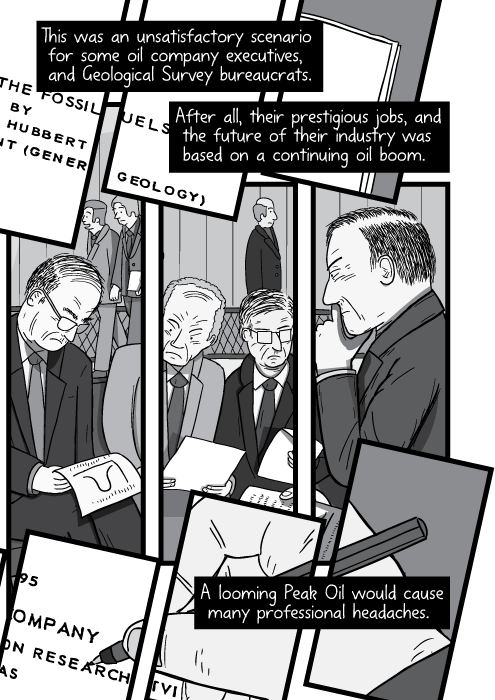
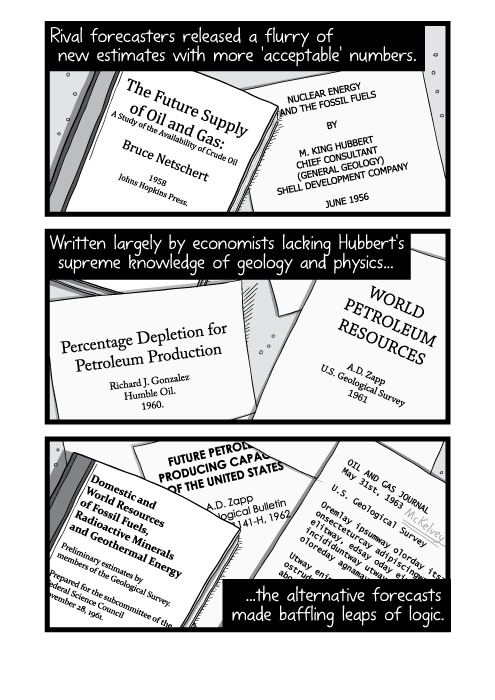
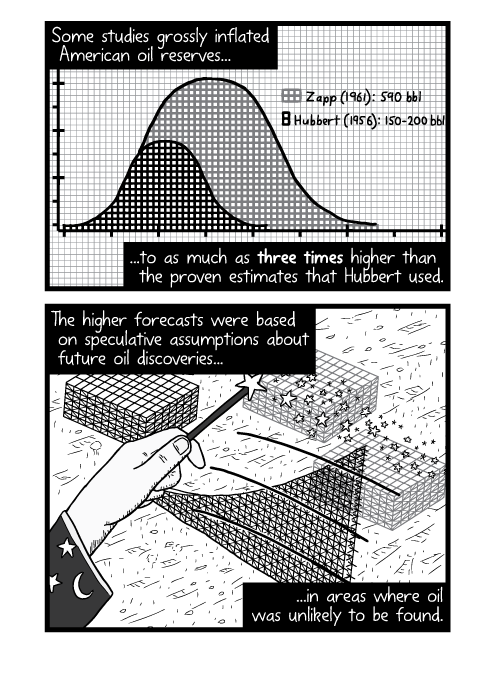
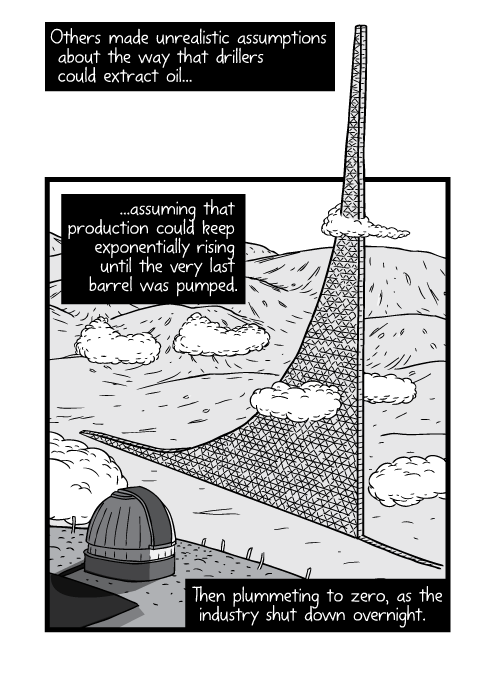
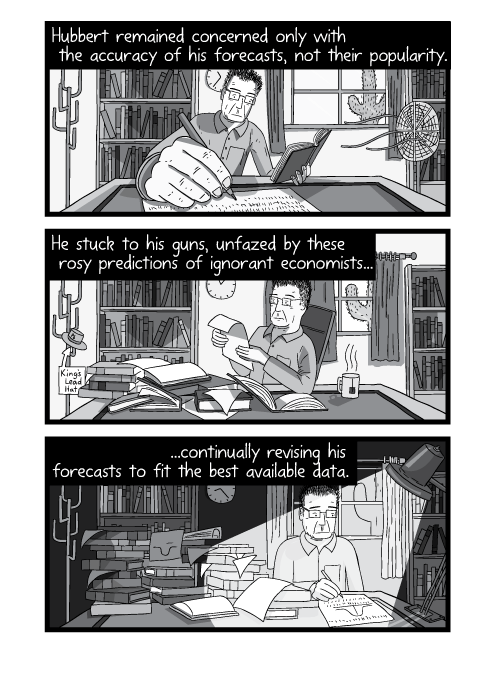
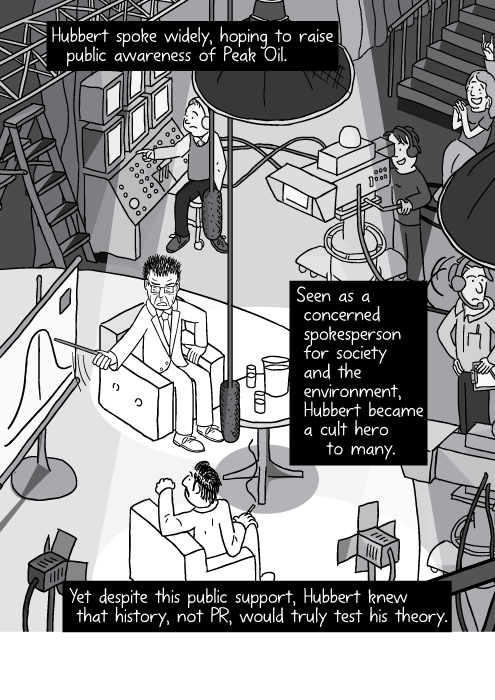
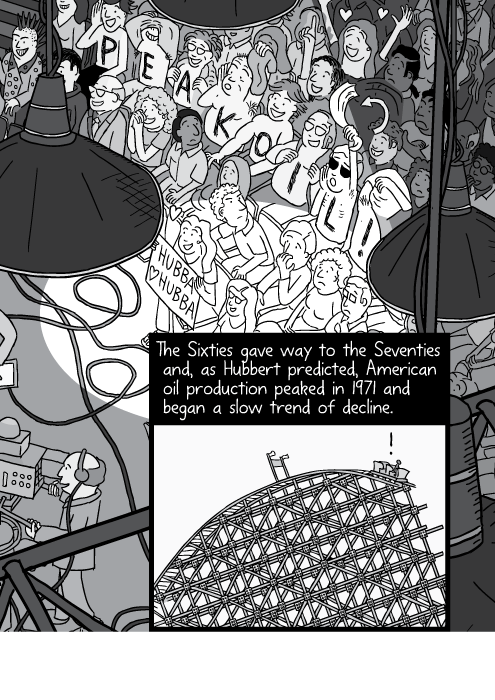
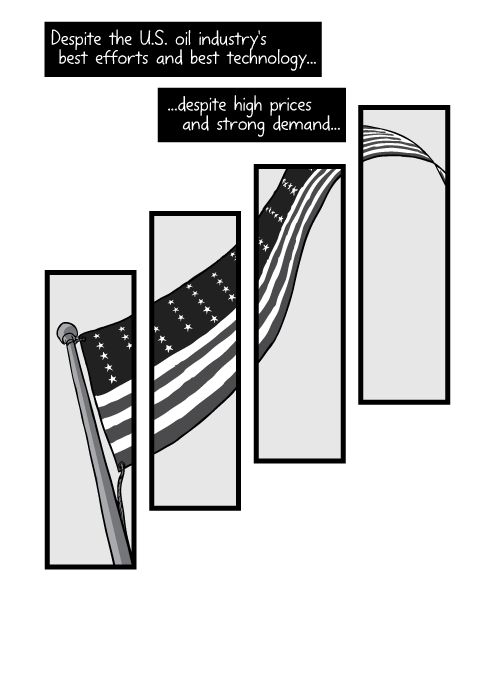
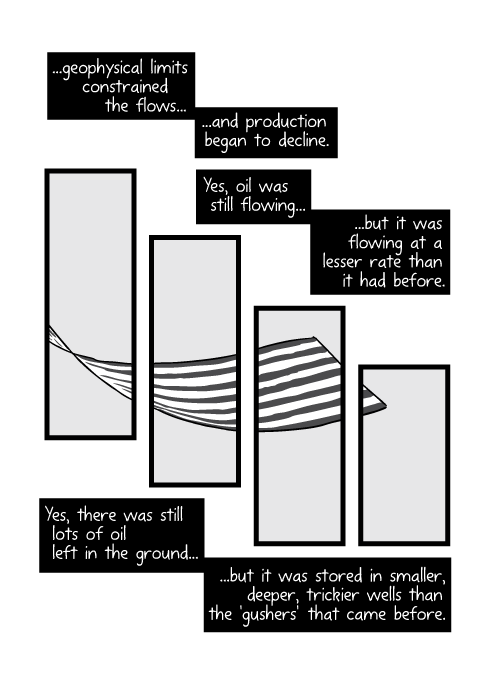
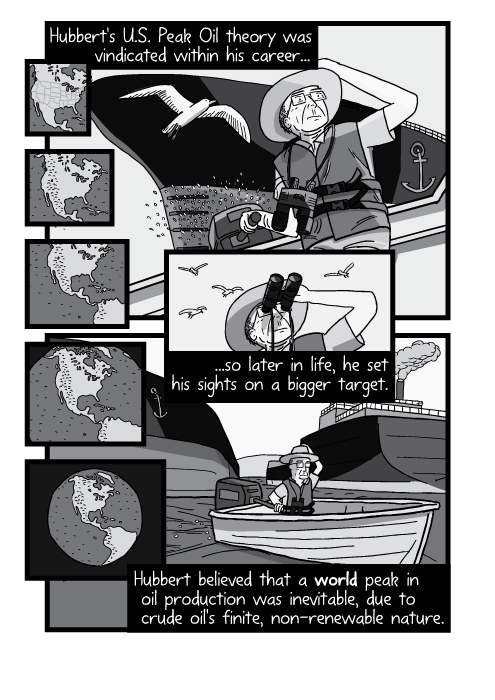
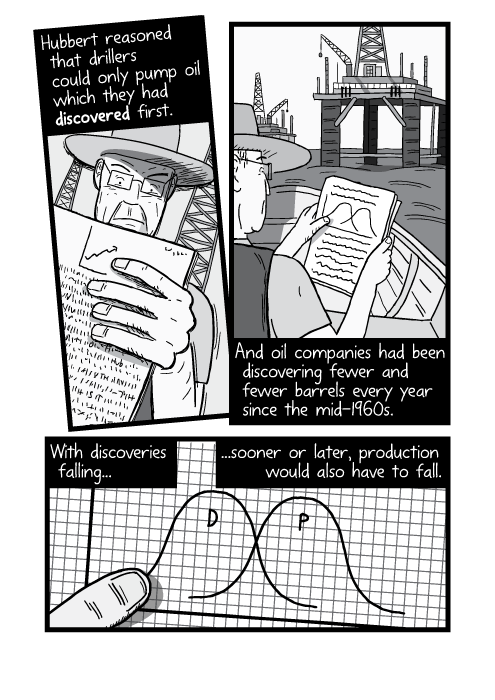
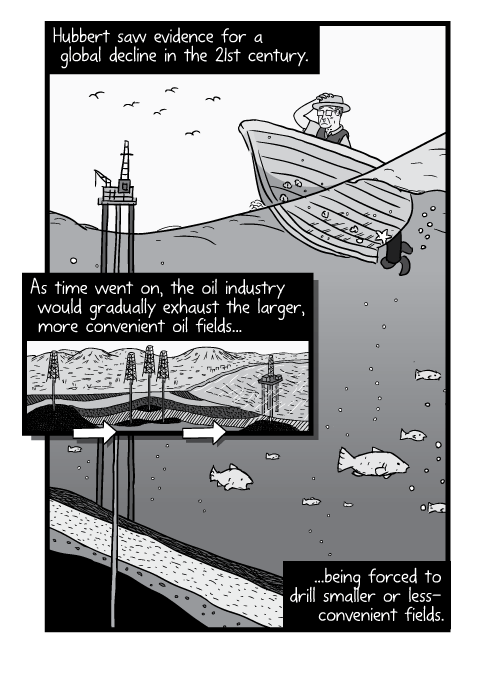
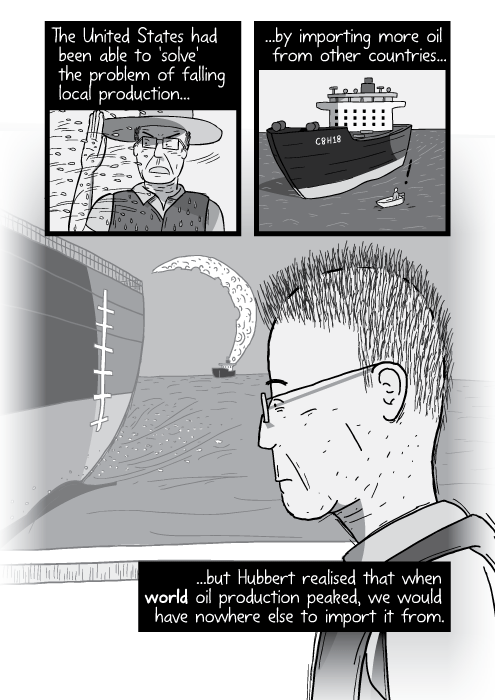
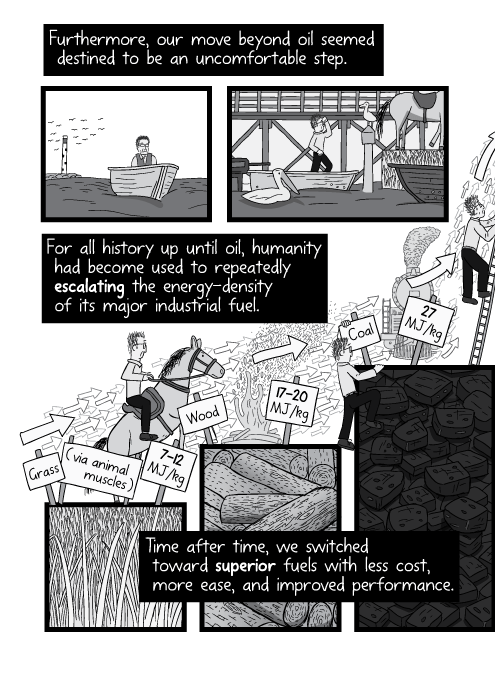
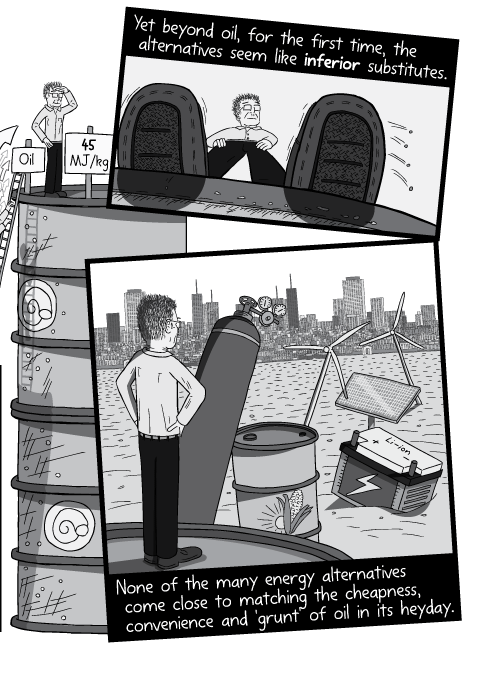
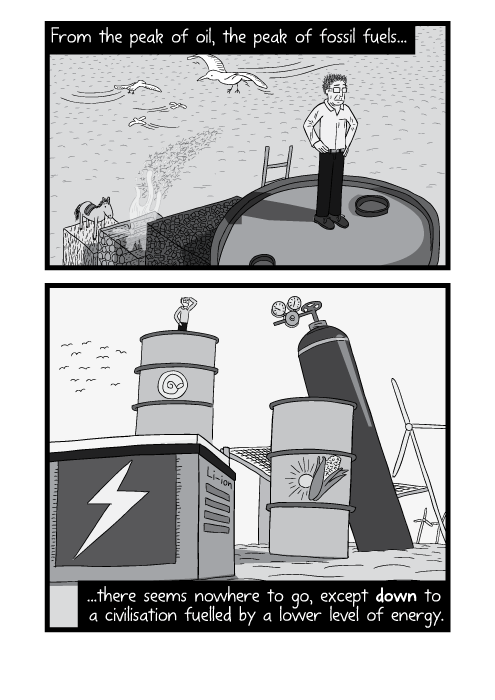
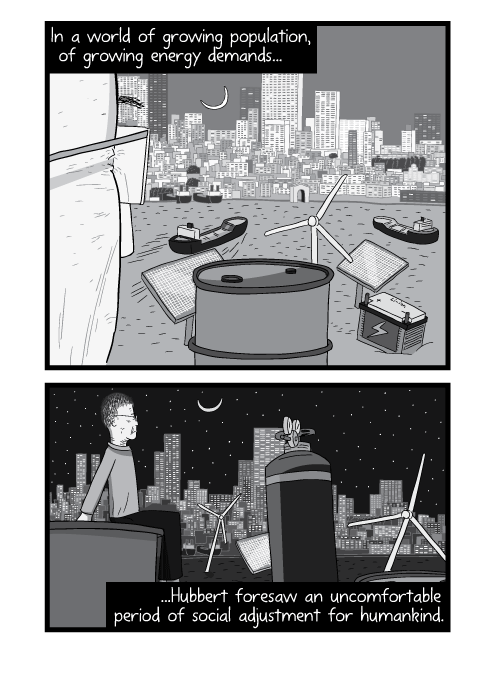
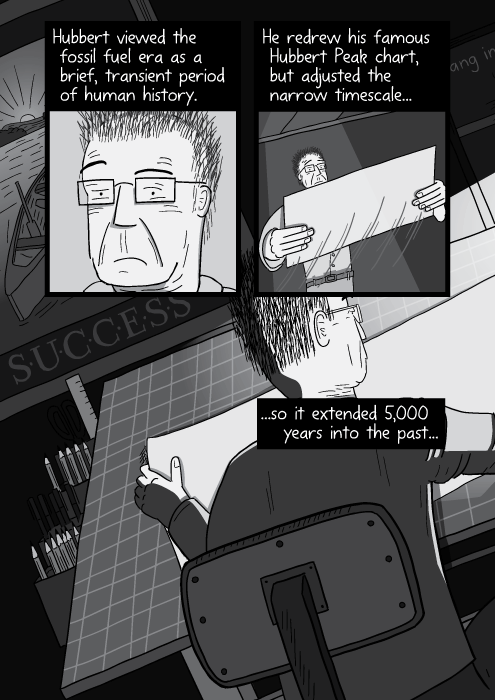
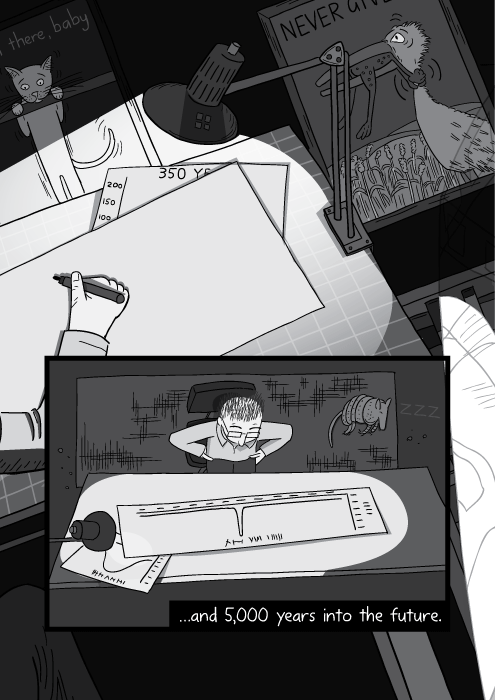
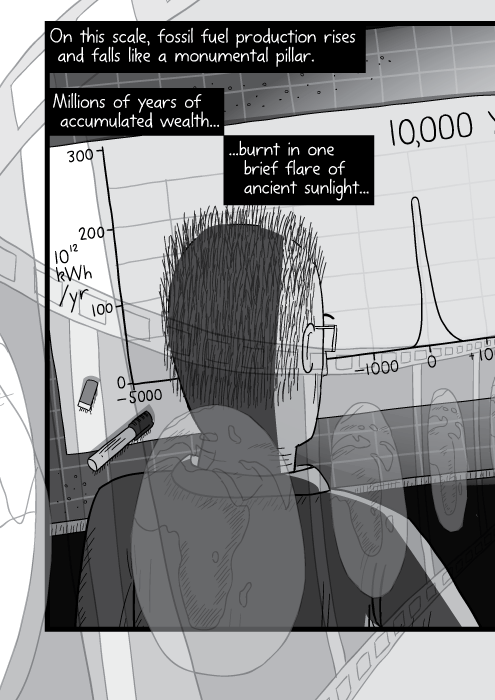
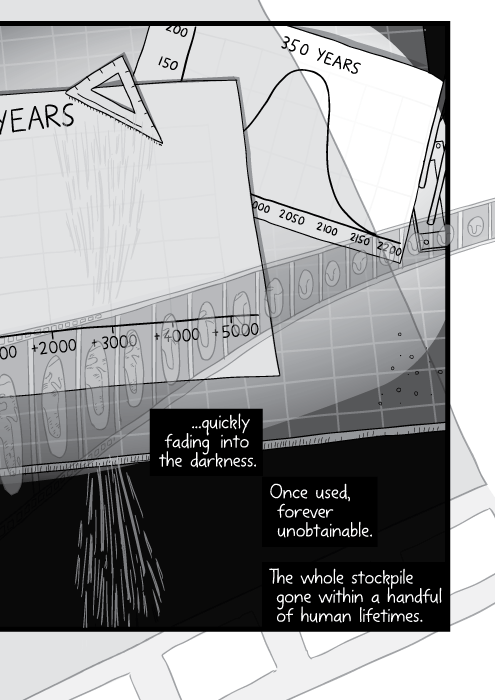
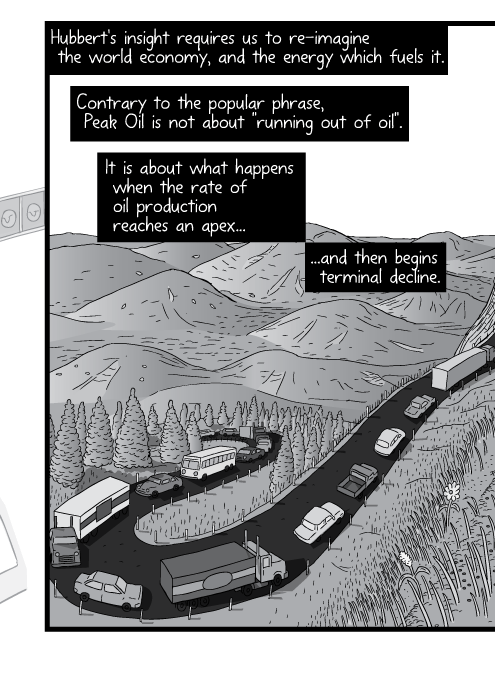
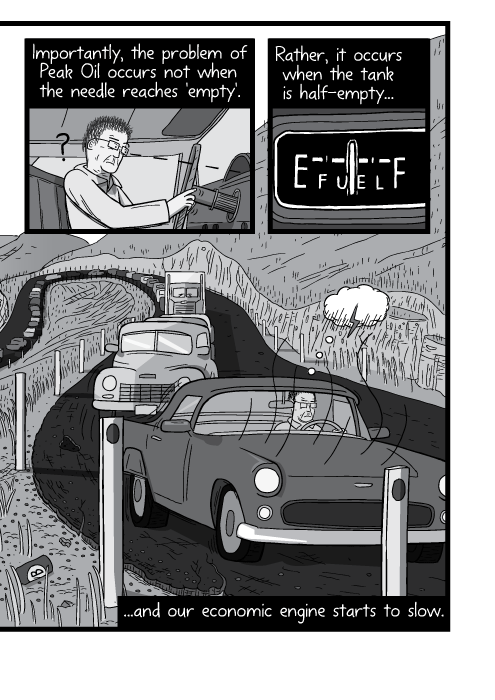
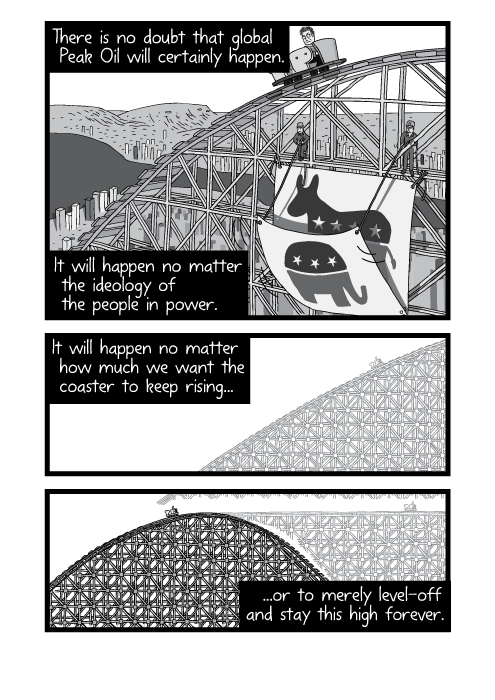
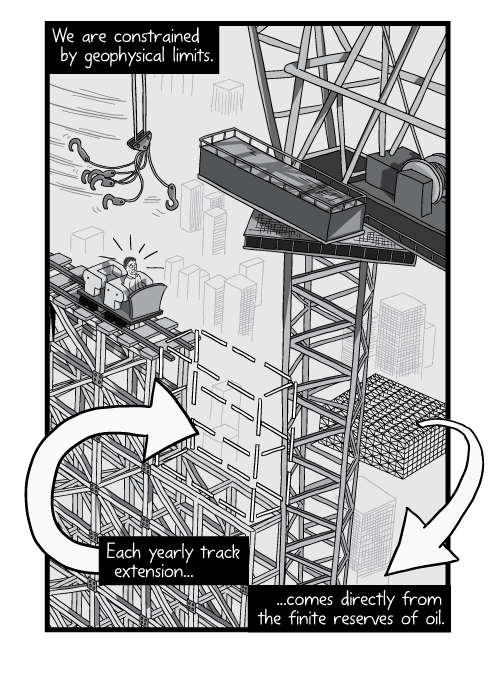
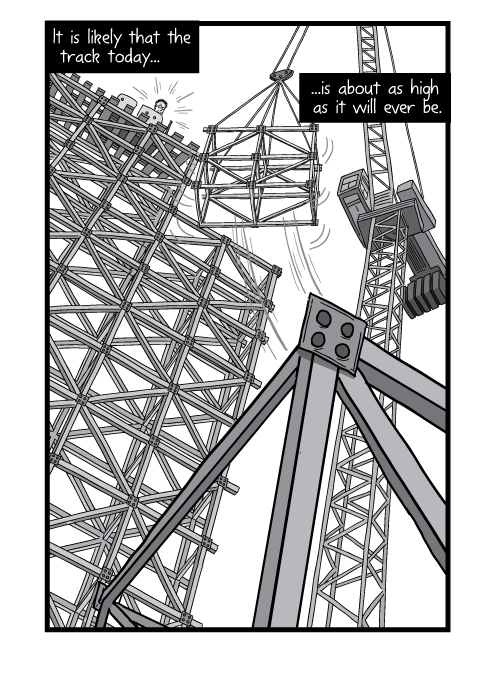
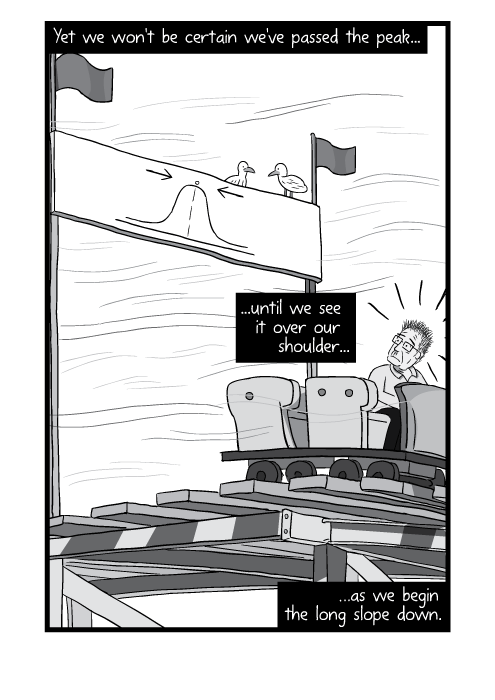
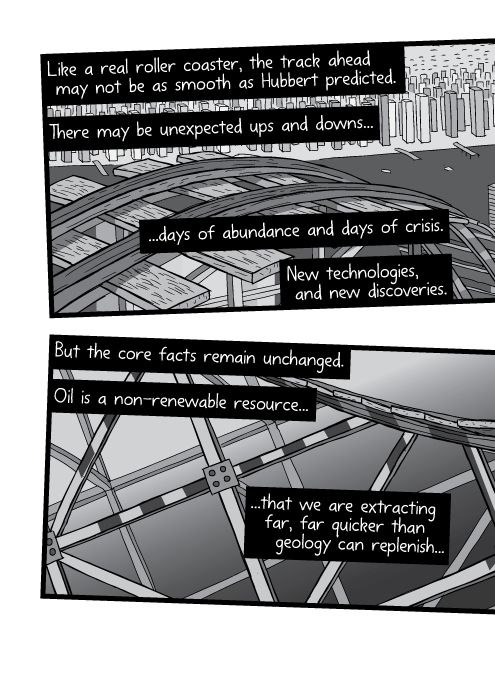
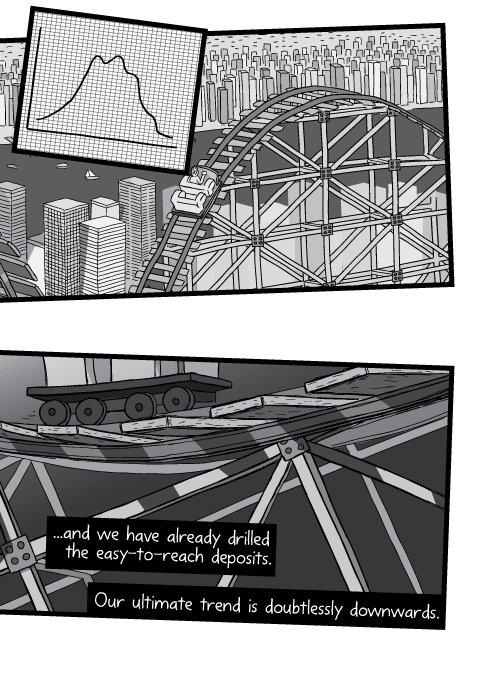
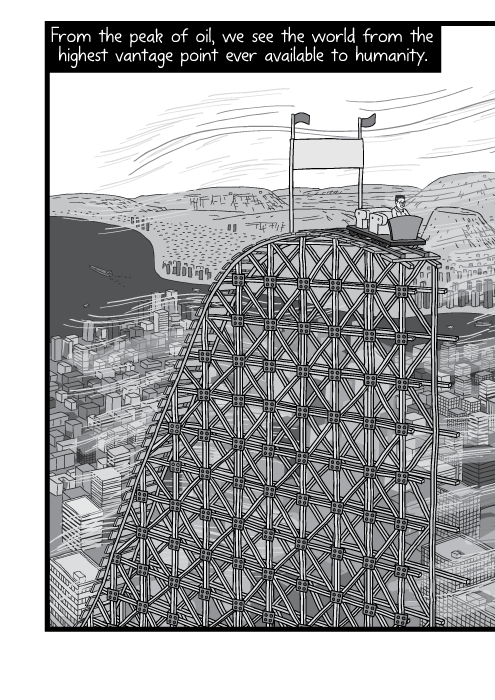
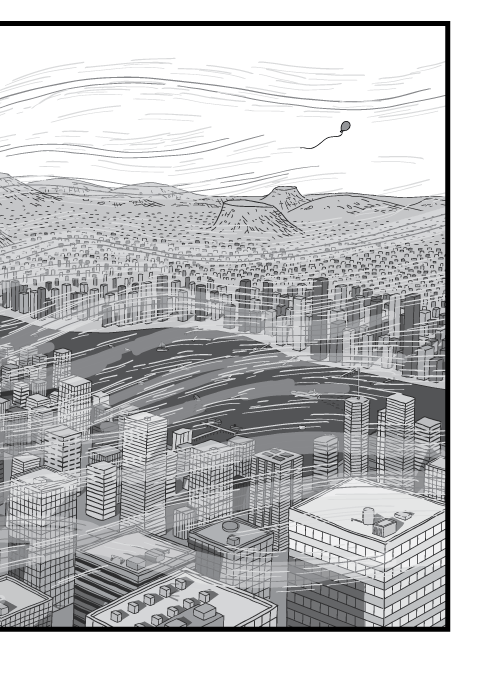
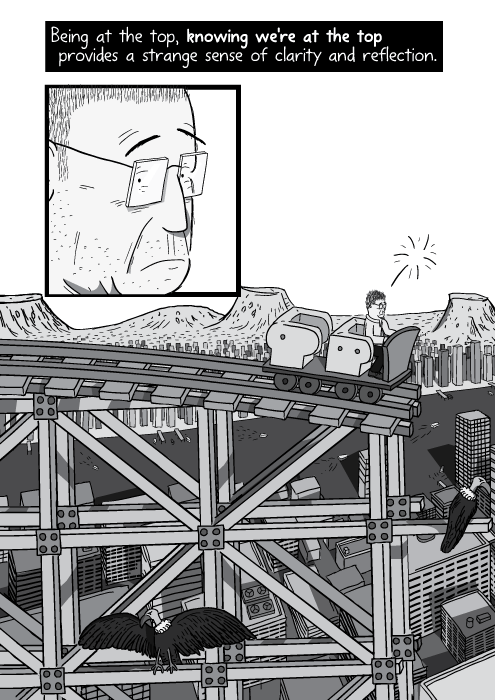
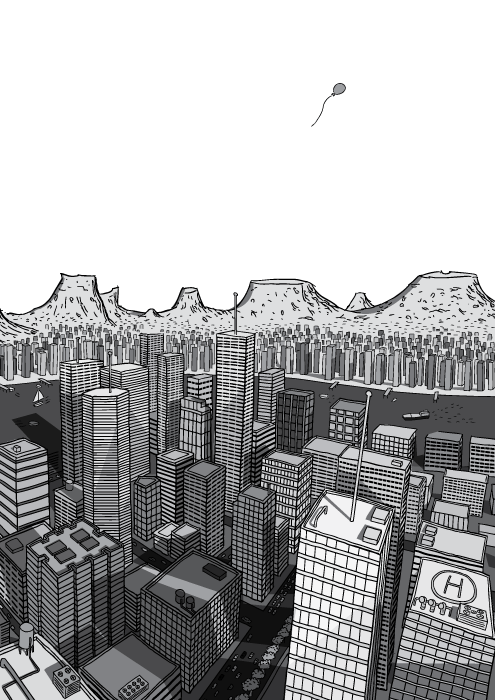
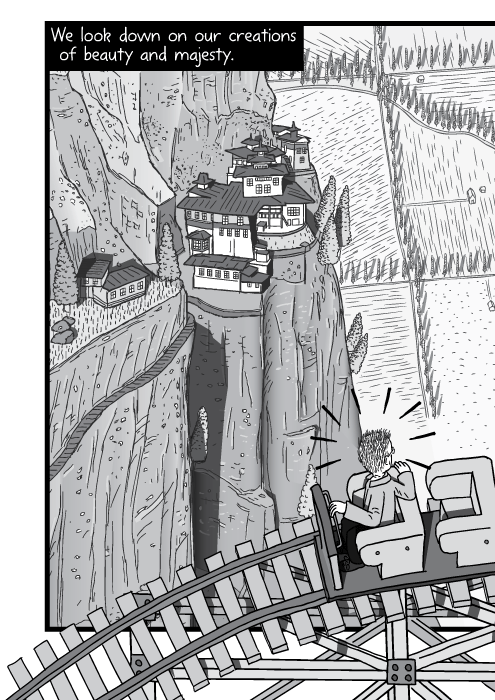
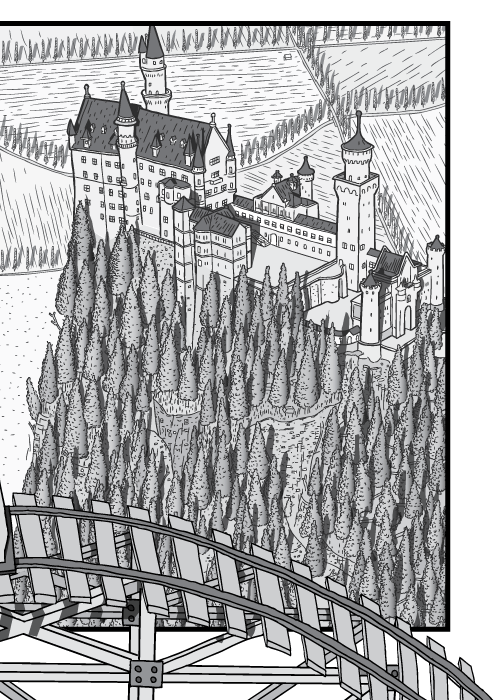
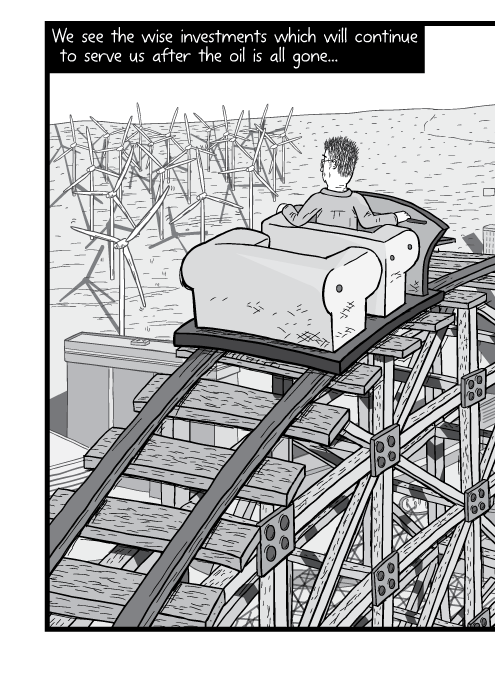
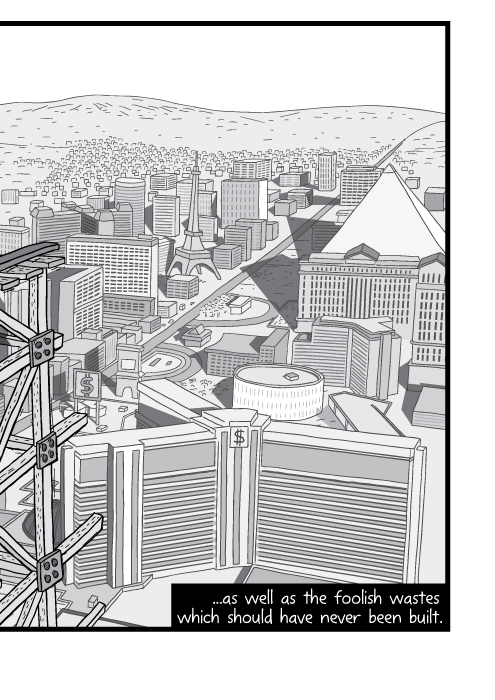
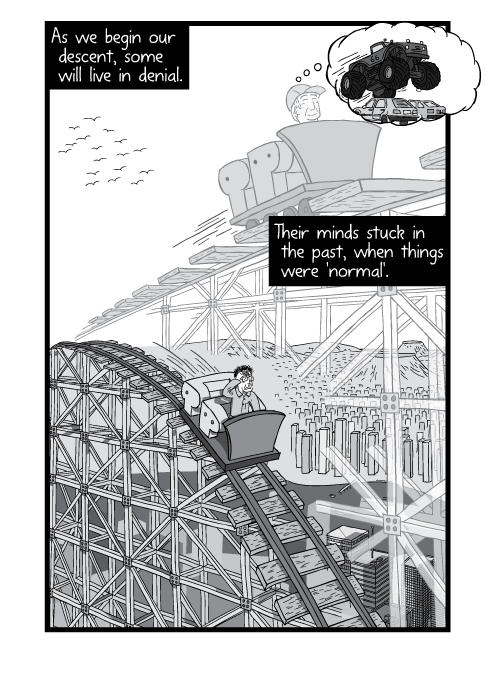
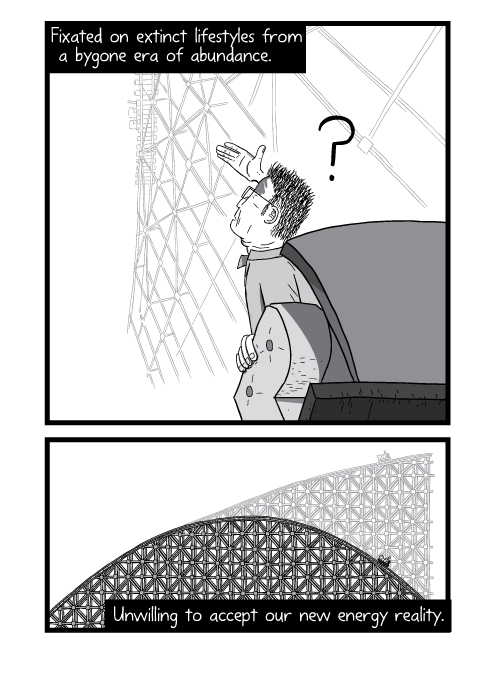
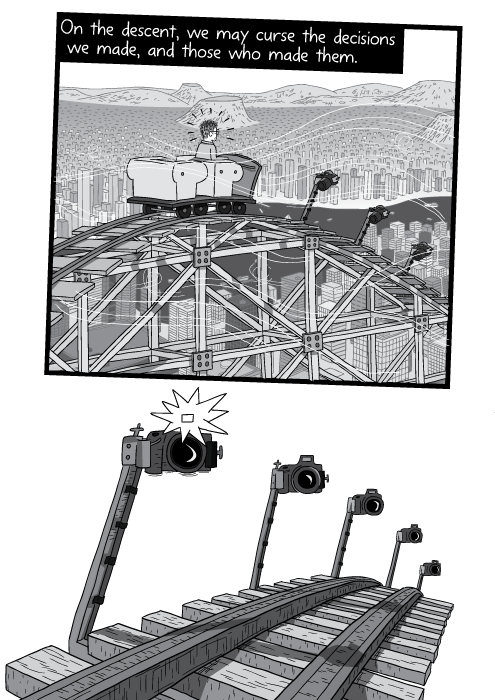
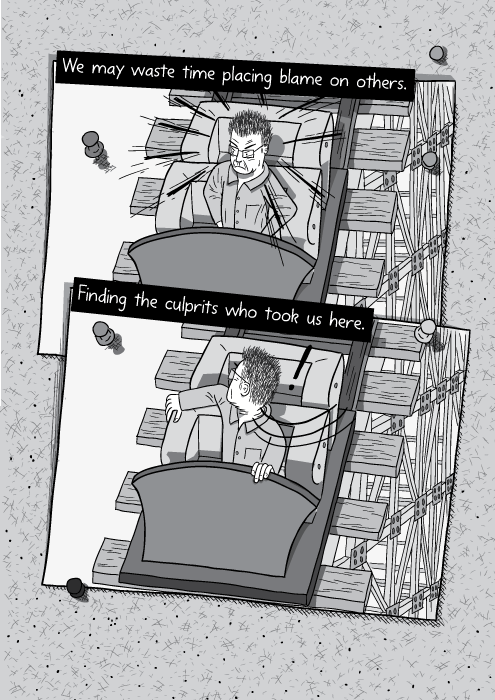
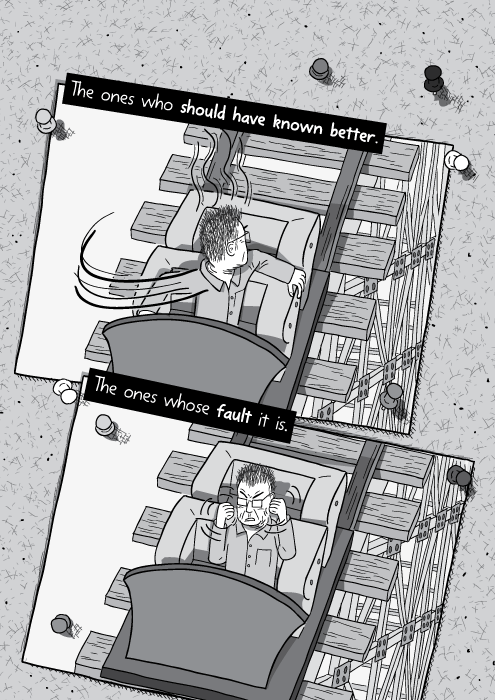
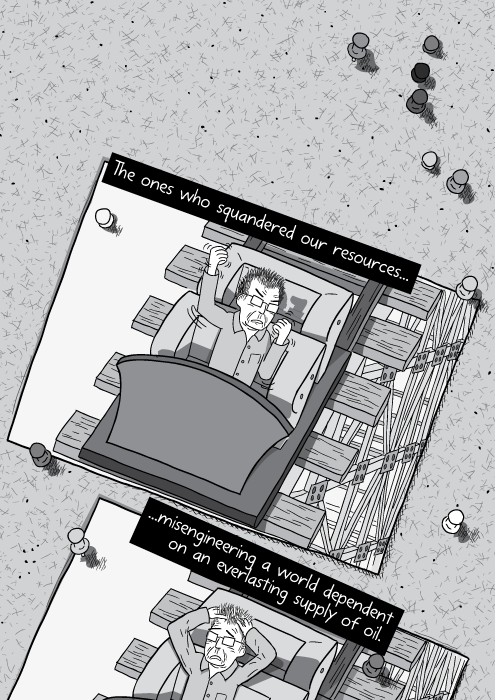
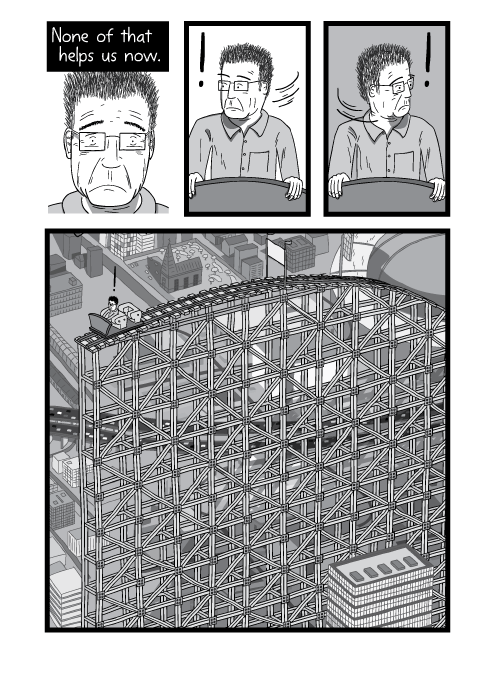
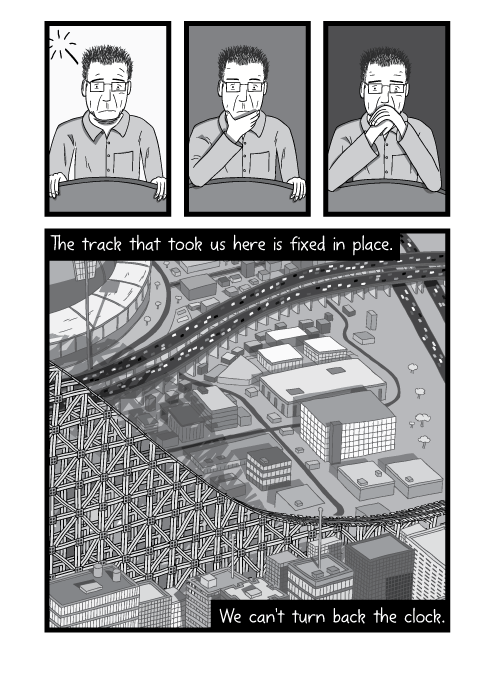
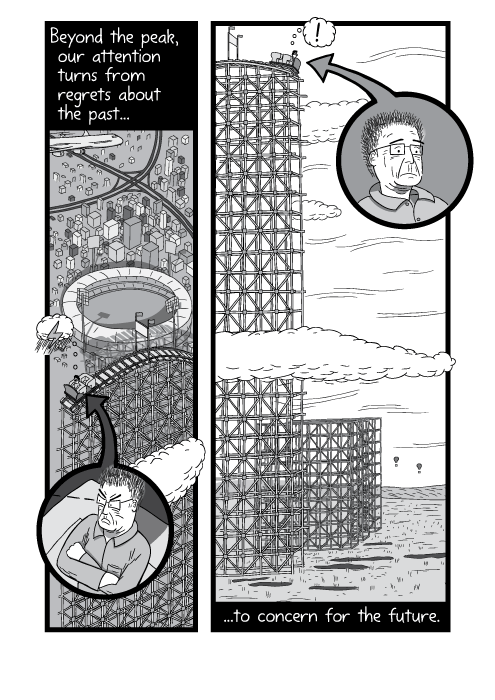
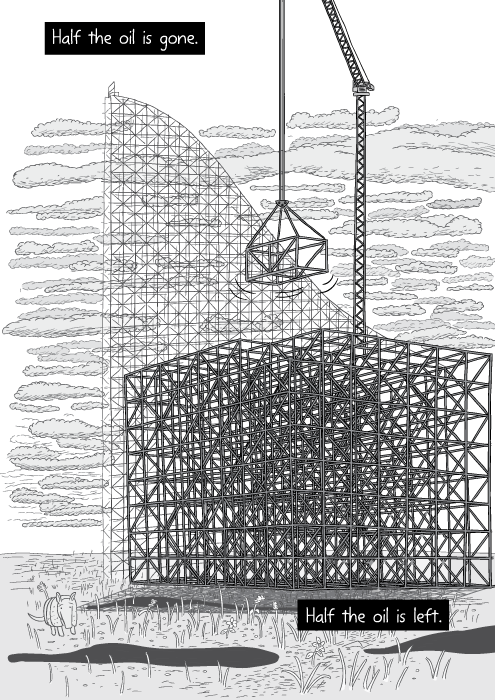
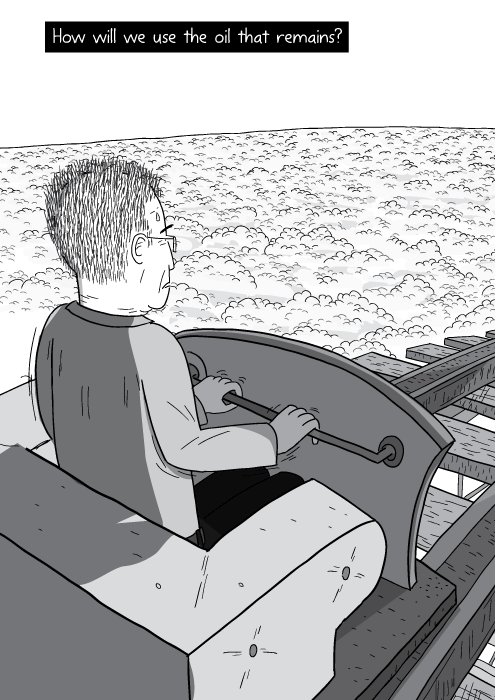
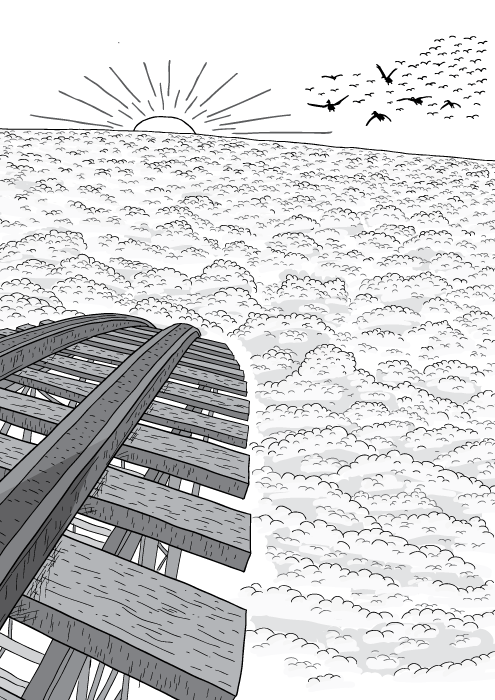
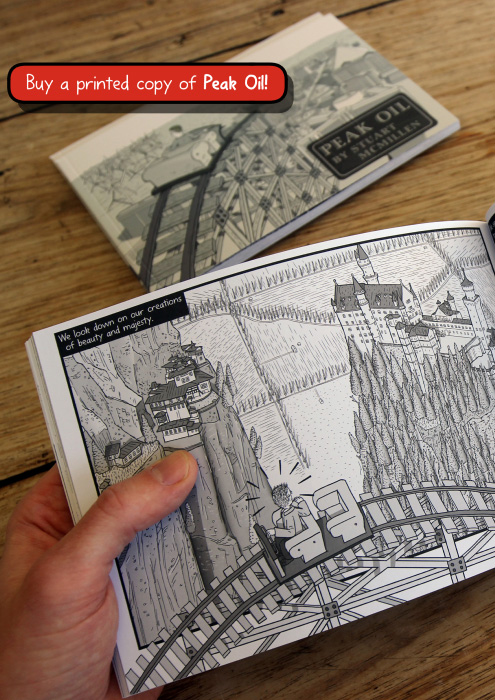
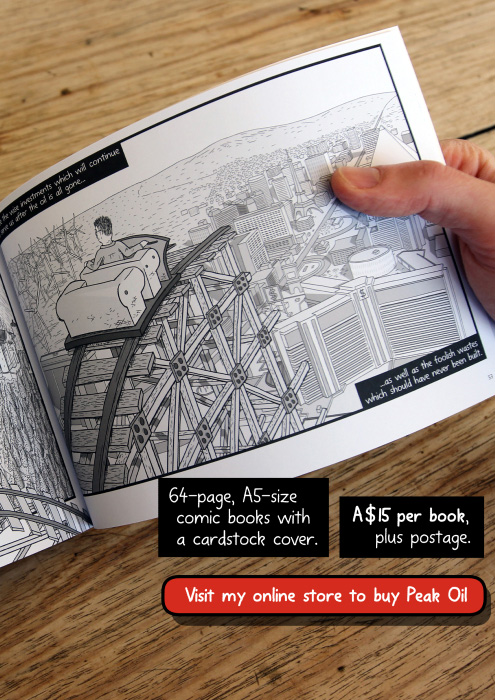
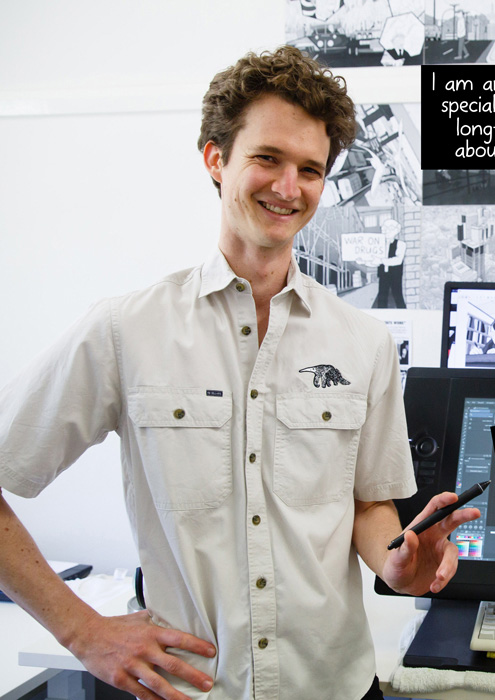
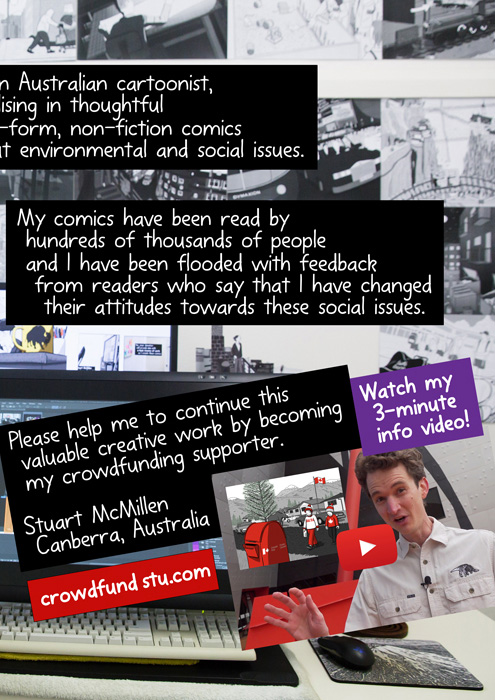

Comic about M. King Hubbert and his ‘peak oil’ theory of fossil fuel depletion, including a history of the U.S. petroleum industry.
Things to do now you’ve finished reading Peak Oil:
• Read my reference list, for sources backing up the comic’s statements about fossil fuel depletion and M. King Hubbert.
• Read my essays about ‘the making of Peak Oil‘, describing the 1,500 hours I spent drawing this Peak Oil comic.
• Link your friends and colleagues to this comic via peakoilcomic.com or buy them printed comic books to read.
• Educate yourself about the implications of Peak Oil (and global warming, population growth, etc) for our civilisation’s future.


I wrote seven essays about the various aspects surrounding the 'making of' Peak Oil. This is a list of all seven articles from that series

How many invisible "energy slave" workers does it take to fuel our modern lifestyles? A comic about Buckminster Fuller and fossil fuels.

Jimi Hendrix was the greatest guitarist who ever lived. Your climate-denying uncle is just some random bloke who no one has ever heard of.
Comments
Cognac Legion
Hey, Is there an option to download your longer works as PDF/mobi/whateverthehellibooksuses to read on kindle type devices? I also wondered if there was a payment function for these (apart from the patreon- already doing that one :D ) ? Great work btw! - cognaclegion
CSGO
Wow, lovely portal. Thnx ..
pietro
hello stuart I am deaf person and I love very independent and original comics and work in a company where they build the rides for the amusement park if possible your comics are in Italian? I really like your style of comics I drew comics then I broke my balls hehehe thanks
The Oracle of Oil- Book Review – Treehugger – Darwin Survival
[…] looking for images for this review, I discovered Stuart McMillen’s wonderful graphic biography version of the M. King Hubbert peak oil story. It is also worth a […]
Lloyd Alter
I am writing a review of Mason Inman's new book The Oracle of Oil and was looking for an image, and fell upon your version. It is really brilliant and does just a great job of covering the detail, much like Inman's book but of course, graphic. You should do a big marketing push right now! In any case, in my review I am going to use a few panes of yours, as you say with limits and full link back, wonderful stuff.
Luis Guijarro
Nice work.
Peak Oil: A Graphic Story | Ecologise
[…] artist Stuart McMillan has spent over 700 hours creating this amazing cartoon of the life and work of M.King Hubbert. McMillan writes on his blog about what he aimed to do with this […]
Hitler Denial: bypassing the Climate Change 101 debates
[…] I swim contrary to the flow of the current. Discussing topics like Peak Oil, or overpopulation, which are not on the public radar. However, with Hitler Denial, I sought to […]
Michael Dowd
Stuart, I'd like to speak with you on the phone or Skype about the possibility of collaborating. I like your style and have wanted some of my more radical content to be put into comic book format for some time. See here: http://thegreatstory.org/michaeldowd.html and here: http://thegreatstory.org/new.html to get a sense of who I am and where I'm coming from (short bio included below). Warmly, and getting warmer every year, ~ Michael cell: 425-760-9941 Skype: michaelbdowd Personal and media website: http://michaeldowd.org Bio / publications: http://thegreatstory.org/michaeldowd.html Rev. Michael Dowd is a bestselling evolutionary evangelist and eco-theologian whose work has been featured in The New York Times, LA Times, Wall Street Journal, Washington Post, Newsweek, Discover, and on television nationally. His book, Thank God for Evolution, was endorsed by 6 Nobel Prize-winning scientists, noted skeptics, and by religious leaders across the spectrum. Michael and his science writer / evolutionary educator wife, Connie Barlow ? both climate patriots ? have spoken to 2,000+ groups throughout North America since 2002. Michael has delivered two TEDx talks and a program at the United Nations. He has also conducted two acclaimed online conversation series?: ?The Advent of Evolutionary Christianity? and ?The Future Is Calling Us to Greatness.? Dowd?s passion for proclaiming a pro-science message of inspiration ? what he calls ?the gospel of right relationship to reality? ? has earned him the moniker ?Rev. Reality? as he speaks prophetically in secular and religious settings alike about our sacred responsibility to future generations.
stuart
Yes. Please see the video embedded on this page immediately after the end of the Peak Oil comic. My book will be titled Thermoeconomics, and I expect it to be ready and released in 2017.
Ted
Would definitely buy a hardcover of your work Stuart. Any chance that will happen?
Comics and Experts | Change Log
[…] changes over the last couple days. Firstly, I am thrilled to have discovered Stuart McMillen’s delightful Peak Oil comic and have added a link to it near the top. Thanks […]
Bruno
Buying a PDF sounds borring. But I would buy a hardcover collection of your comics.
Craig
Very informative, presenting the issues in easy to digest way. Thanks.
Mohamed Nawaf
This is by far the best comic book I read in years. Informative and relevant to our lives. Loved it. Thanks for enlightening on this unsung hero and his discovery on peak, I mean we all knew Oil was a finite resource but this was so eloquently put with great creative drawing it had a good impact.
Peak Oil Comic | Post Growth Institute
[…] are a few of my favourite panels, not in any kind of order. You can read the whole thing for free here, in several different […]
Peter Young
Brilliant communication of such a complex and most important matter...thank you so much. Have forwarded into my networks including Gippsland Climate Change Network, one of Victoria's 9 regional alliances. Best regards and in total awe. Peter PS the money is in the bank from us for this legendary effort
Daryl J
Stuart, This is an amazing piece of storytelling. Visuals are great. The way you take a complex historical story line an bring in to life is a credit to you. Highly educating and entertaining all in one. You have a talent. Posted a donation as a small appreciation of the time and effort you put in...Kudos...
The Fifth Estate | News from the front desk: Issue No 244 ? Stuart McMillen and Peak Oil
[…] a Canberra-based science communicator who has spent over 12 months drawing his 120-page comic Peak Oil, which was released earlier this […]
Luke Keen
I love your work and the way you tell complex things in a simple way. I will share with my pals and hope they pick your work up and run with it :D
Niraj Lal
What a fantastic read! Incredibly clear, engaging and informative. My favourite line is on page 89: "Millions of years of accumulated wealth... burnt in one brief flare of ancient sunlight." Congratulations on producing what will be a valuable resource of science communication for years to come. I currently lecture the 4th year/Masters Engineering course on "Energy Resources and Renewable Energy Technologies" at the Australian National University - and will make this required reading for the class. Thanks for this. - Nij. -- Dr Niraj Lal BSc (ANU), PhD (Cambridge) Research School of Engineering Australian National University
Bill Browne
Hi Stuart, Great read, very powerful. Have you considered a Creative Commons Attribution-ShareAlike licence, which would remove some legal obstacles for people to share, translate and adapt your work? Happy to talk more if you have any questions about Creative Commons. See you at the next Green Drinks. Bill
Peak Oil: A Graphic Story | Overshoot.in
[…] artist Stuart McMillan has spent over 700 hours creating this amazing cartoon of the life and work of M.King Hubbert. McMillan writes on his blog about what he aimed to do with this […]
Graham Ricketts
I absolutely love your work = ) I hope that you are able to keep it up?a positive future depends on creative, informative work just like this.
Lance Abbott
Thoroughly enjoyed the post. It is not just oil we take this approach to, we continually participate in economic behavior that has historically proven itself unsustainable. Deficits, public debt, debasement of currency -- all of these things have happened ad infinitum, and yet we find ourselves in the same situation again. It is the human condition. The only thing we learn from the past is that we don't learn from the past. Keep up the good work.
John S
A great comic about a potentially very confusing and difficult subject. Great video, too! I'm off to your archive to spend the rest of the afternoon reading your other comics. Great stuff, Stuart - looking forward to Thermoeconomics!
The Black Stuff | john g. swogger
[…] Speaking of applied comics, thanks to James McKay who’s pointed me in the direction of a great web comic by Australian artist Stuart McMillen – Peak Oil. […]
Peak Oil: A Graphic Story | Peak Oil India | Exploring the coming energy crisis and the way forward
[…] the graphic story: Peak Oil Read McMillen’s blog entry: The Making of Peak […]
Dave Room
Thank you for your work! M. King Hubbert is one of my heroes, and you handled his story beautifully.
Peggy O'Connor
Very good job on a terribly important subject. May this be seen far and wide. Best, clearest explanation of our situation I've ever seen. And by far the most entertaining. Plus, you are an EXCELLENT artist. Brilliant.
Mark Robinowitz
Excellent excellent excellent. A quibble, though: I don't think Hubbert came up with the term Peak Oil, I've read it was Colin Campbell (an equally astute geologist) when they were creating ASPO around 2000. When I first read about Peak Oil in the 1980s the term was not in use. I'm waiting for Peak Denial, but I think it's a renewable resource.
Marc WOLF
Very nice job, with a good narrative style to take the hand of every one of this complex subject.
Olaf Schilgen
Dear Stuart, you did an amazing great job! And to be true: You will need 500 pages, there is one more book to be written, about thermoeconomics, about the new economic theory connecting the monetary world with the physical units and dimensions. I call it "Energy as the Numéraire of any given economy".
simon
Great work Stuart. I learned of Peak Oil about 4 yrs ago + gotten pretty well acquainted w/ Hubert's Curve. But this is the first time I grasp that the bell curve nicely falling at a very slow grade was his own hope of how humanity would choose to end our dependence on petroleum. On our term, using what was left to minimize crises, disruptions, chaos + passion to societies. Instead we've used whatever we gotten out to build the peak higher + higher, not leaving the needed amount to build a slope we can climb off without breaking our necks. Thank you for making that so crystal clear.
Rohan Calvert
This is the best art I have seen in a long while. It made my day. Poetic story telling and this will broadcast the message in a way that no other medium can. Thank you Stuart for the hard work. I've made a donation and look forward to following your progress.
Steve Keen
A brilliant exposition. I'm working on a related academic project right now and the group I'm part of may well contact you to illustrate its ideas.
Howard B. Bernstein
Excellent. I've already emailed it to several and will be sharing it on Facebook.
Stephen Hinton
Good one!
Maxine Cottrell
This is great! Approaching the story with the wonderfully analytical clarity as well as empathy is a win. Thank you Stuart. And thank you Mr. Hubbert!
Michael Lardelli
Fantastic work Stuart!! You have done a wonderful job capturing the essentials of Peak Oil. I must check out your other work. Keep it up!
Kjell Aleklett
Great work Stuart, I hope that you read my book ?Peeking at Peak Oil? when you made your research on Peak Oil. http://www.springer.com/gp/book/9781461434238 As you I?m using illustrations to explain the important facts about Peak Oil. Just now I?m writing a second book and in that I will make a reference to your work. I will also write about it on my blog https://aleklett.wordpress.com/ If you send me your e-mail I will send you some chapters to read. Best regards, Kjell Aleklett, president of The Association for the Study of Peak Oil&Gas International
Richard Li
Thanks for the creation, wonderfully done. Another related subject is the correlation between financial crisis and Peak Oil King Hubbert predicted in 1980's: http://www.hubbertpeak.com/hubbert/monetary.htm I think it have the potential to be the topic the sequel of this comic (Peak Oil). Richard
daniel
Nice work, it's an important issue!
Paul Hilton
Haha, I loved that comparison for perspective on how long it took to when you started on how much hair you had.